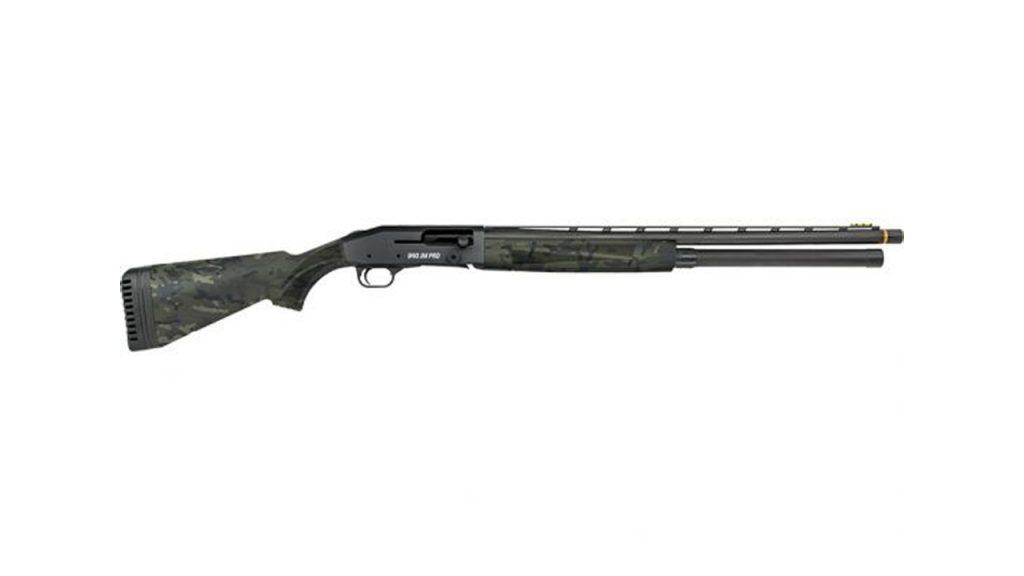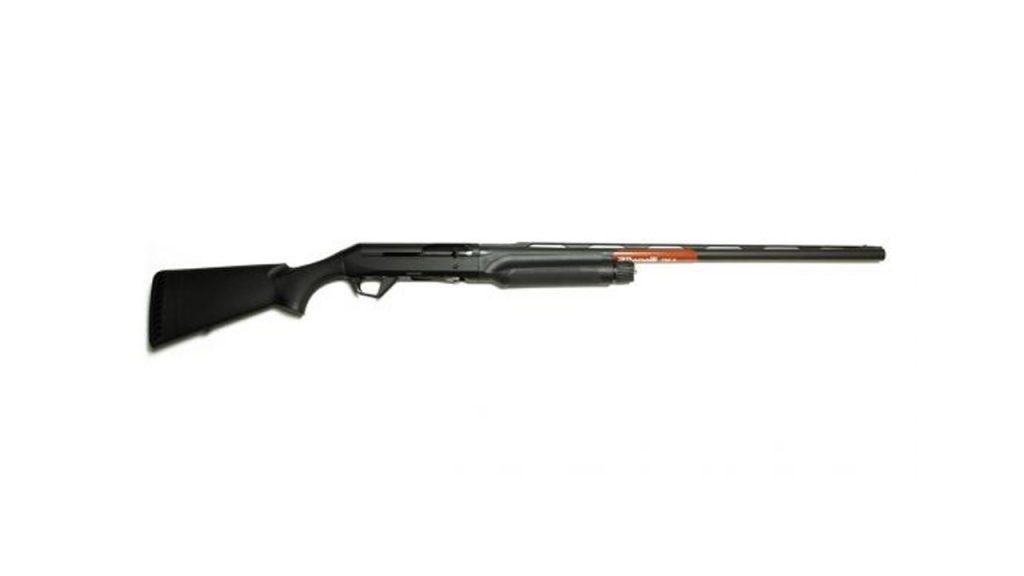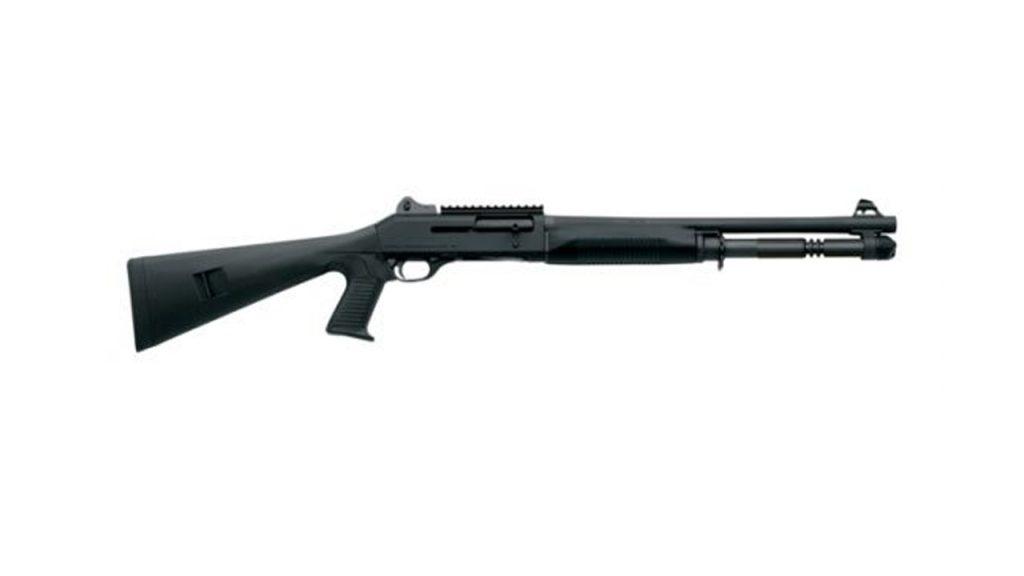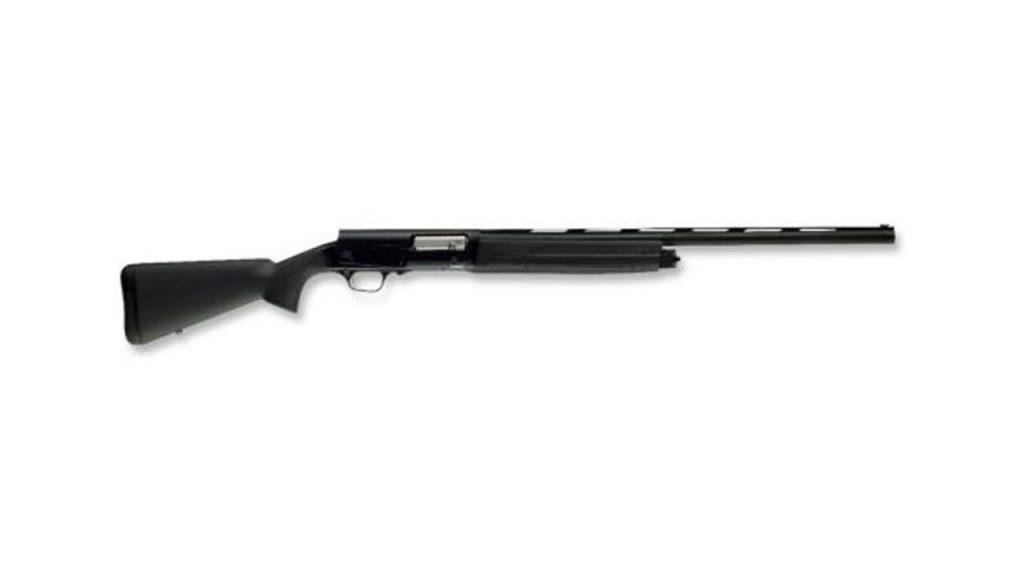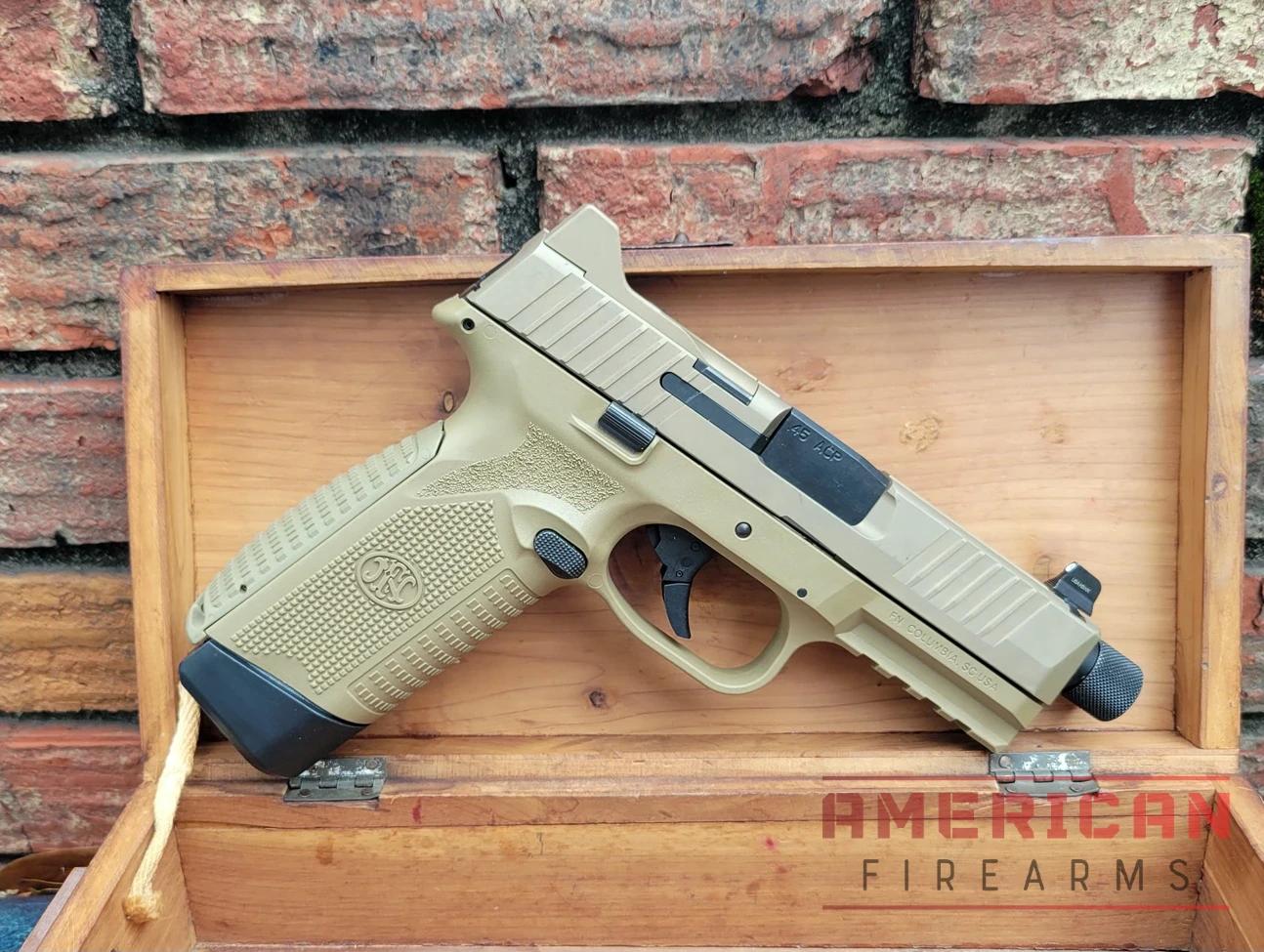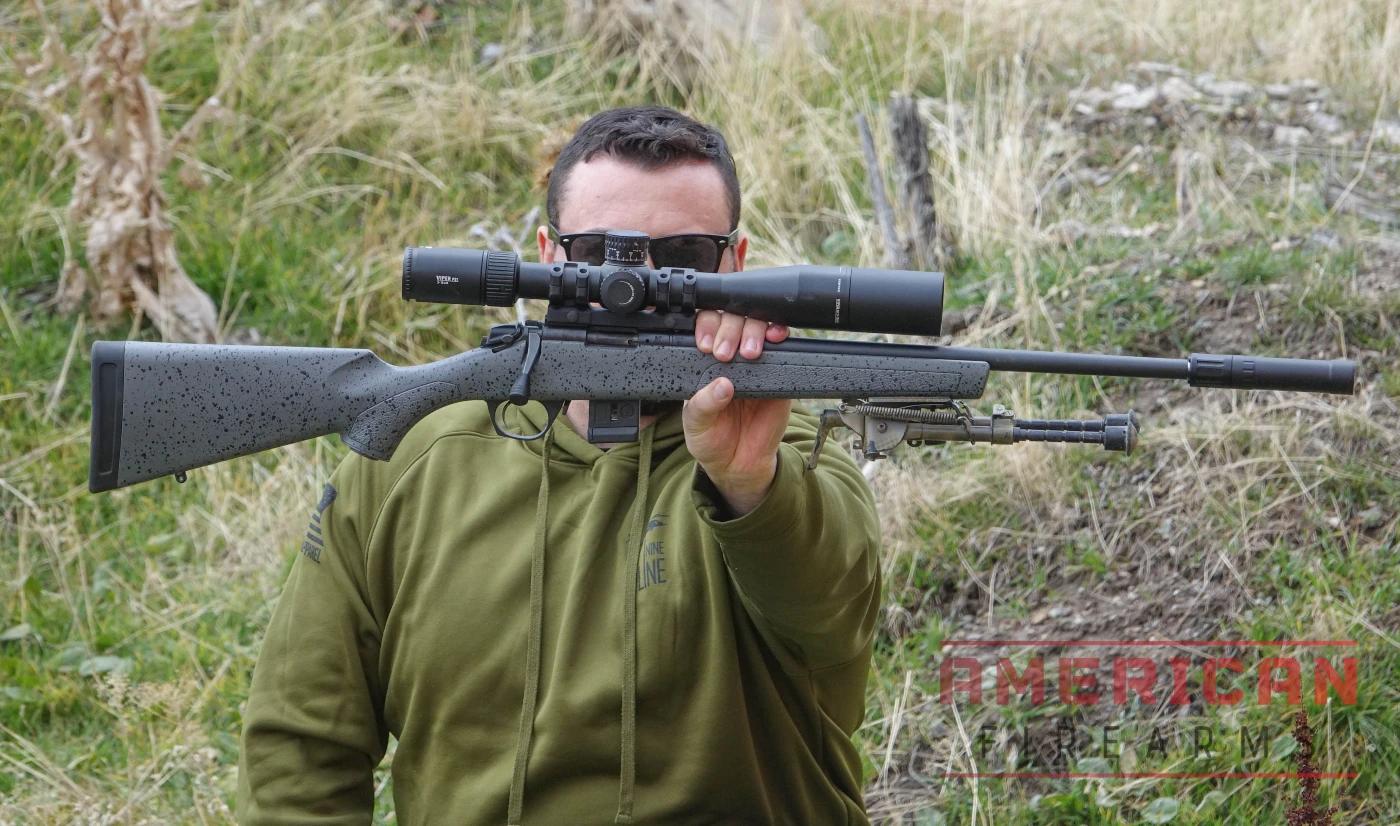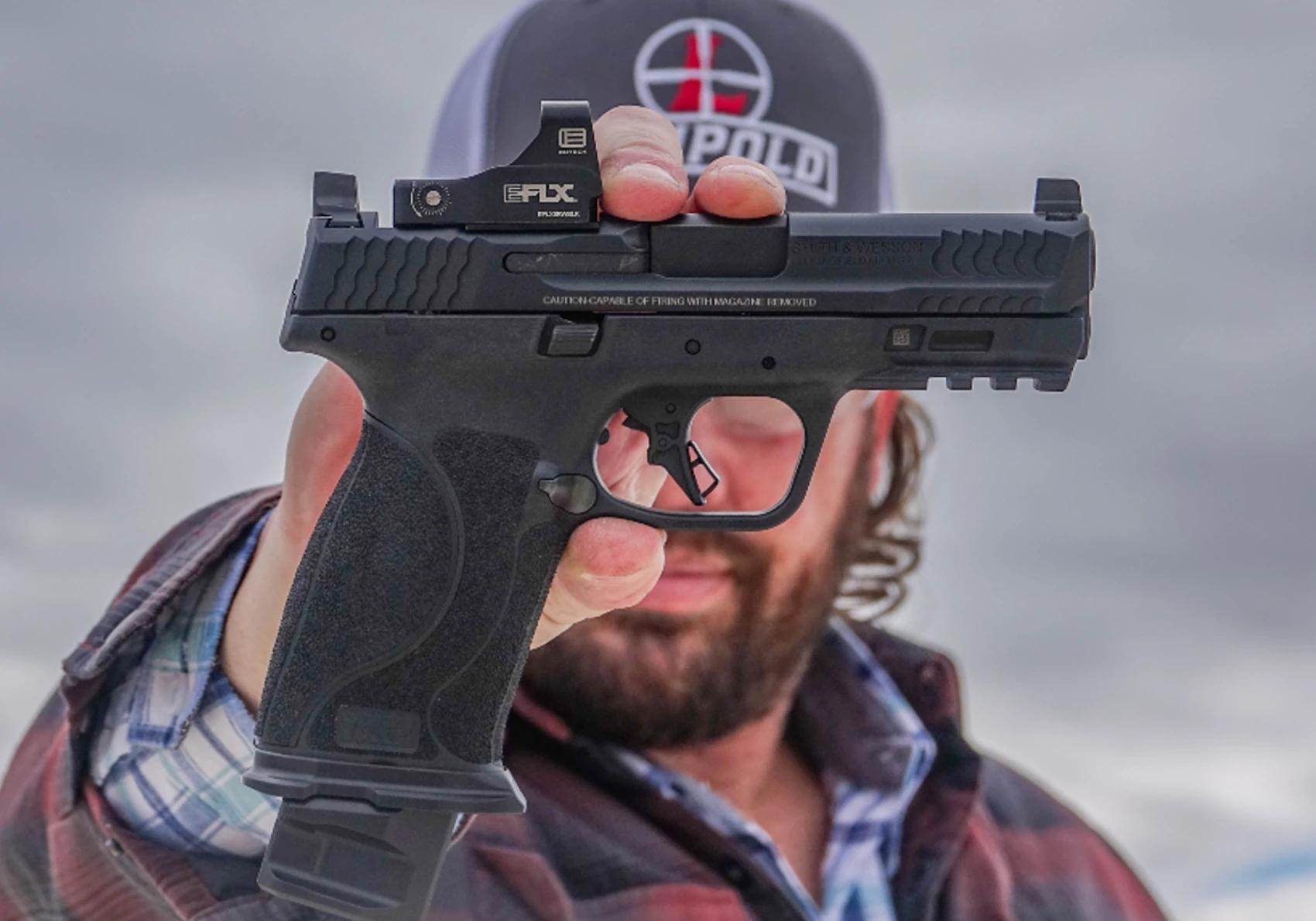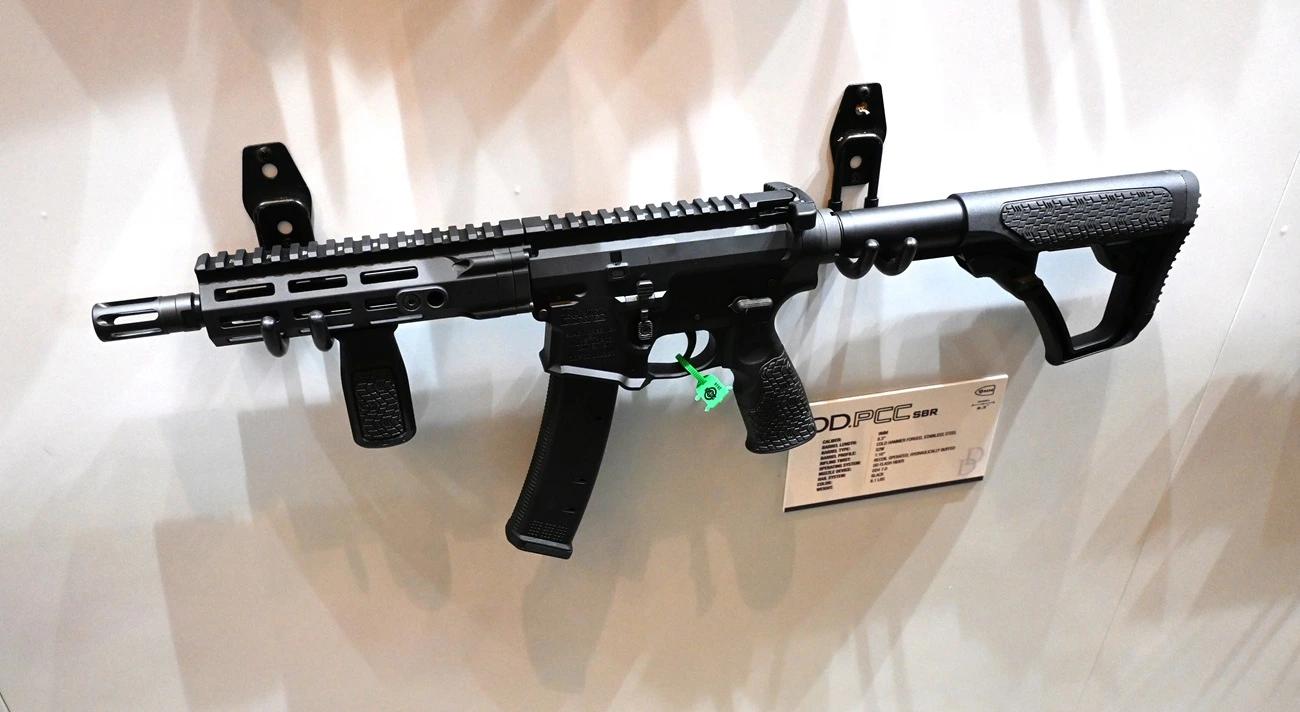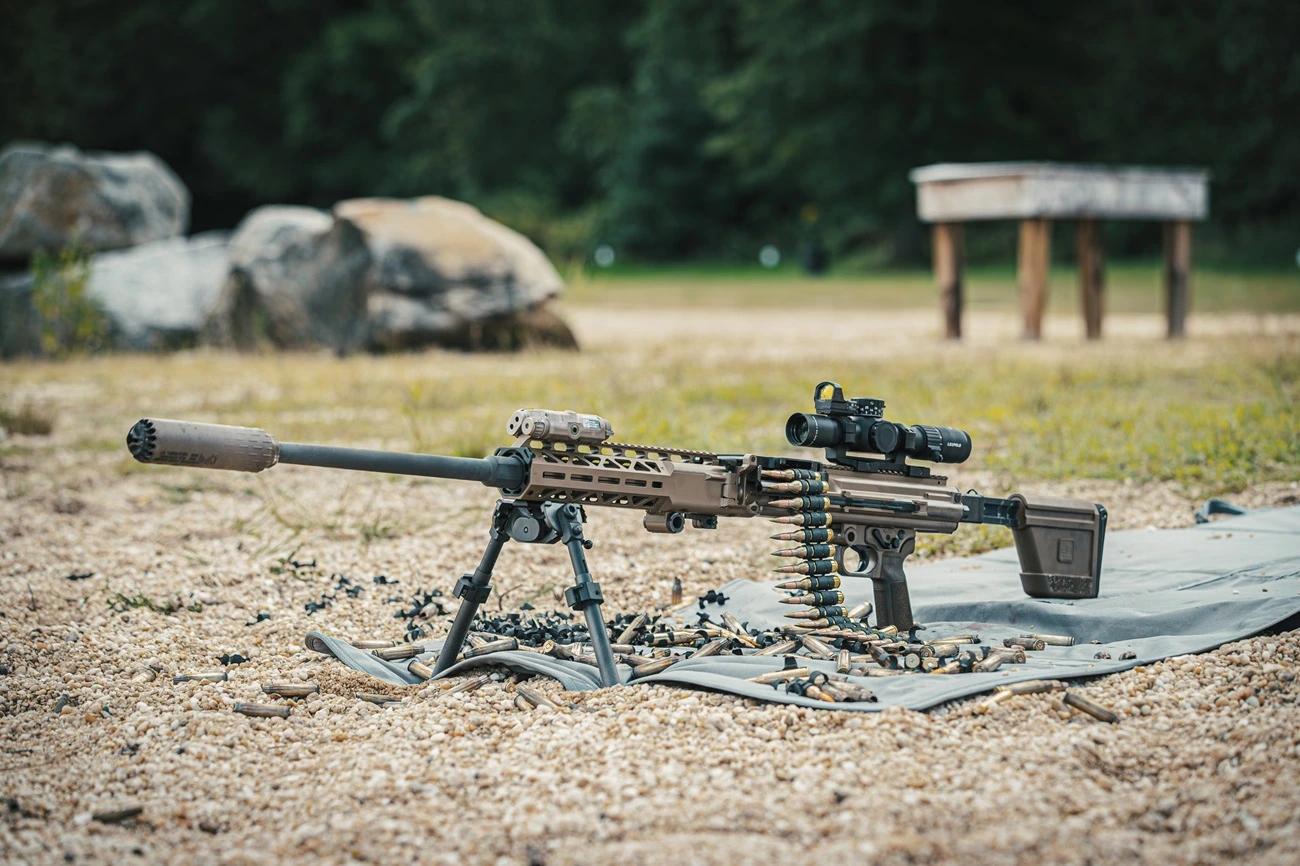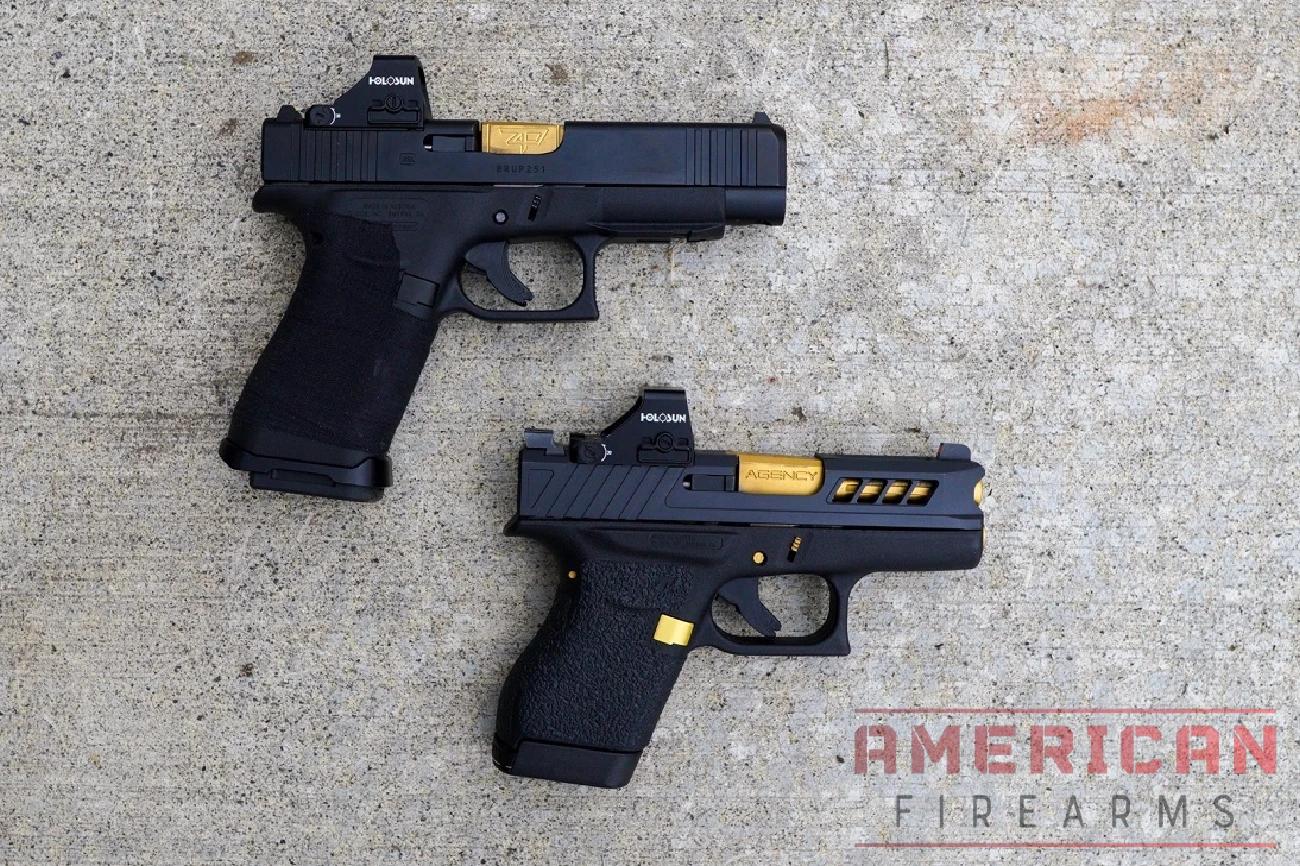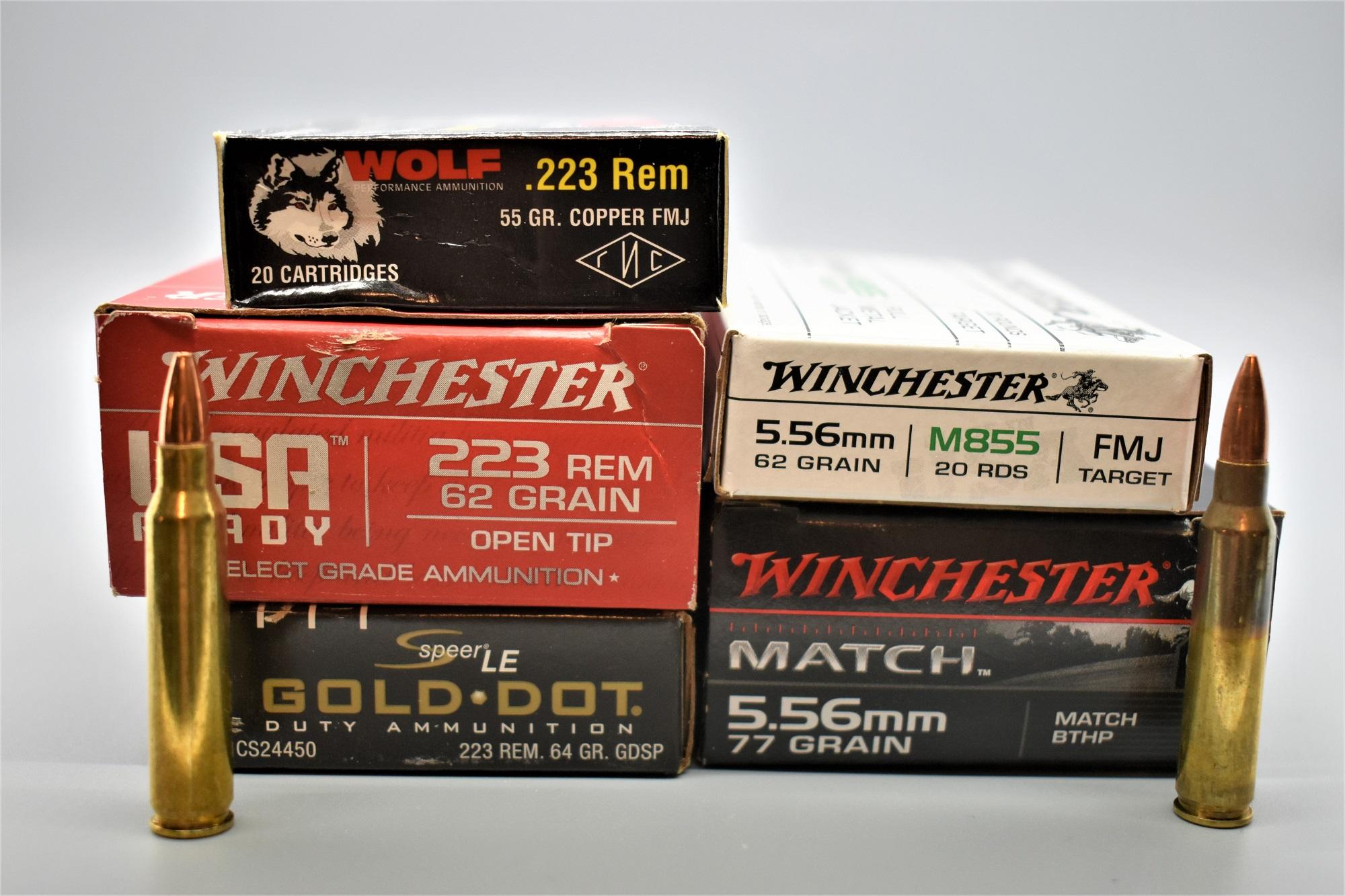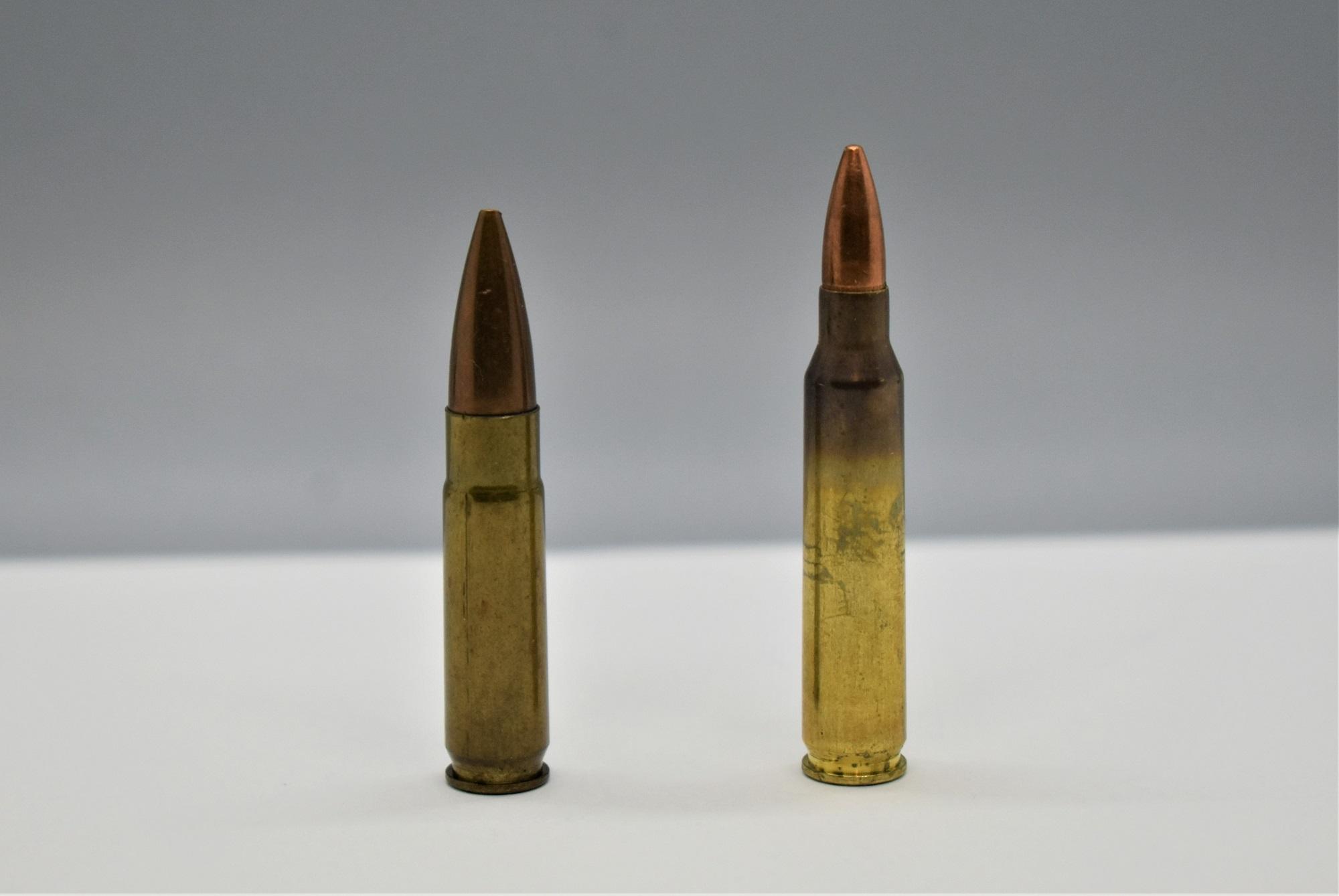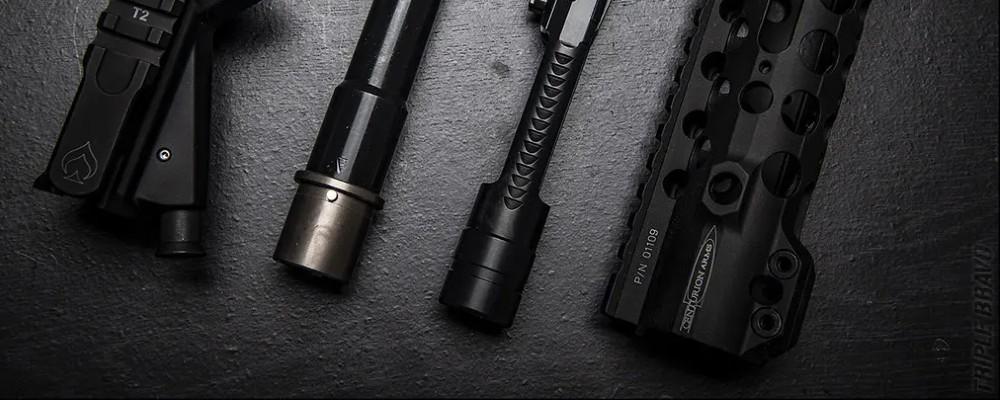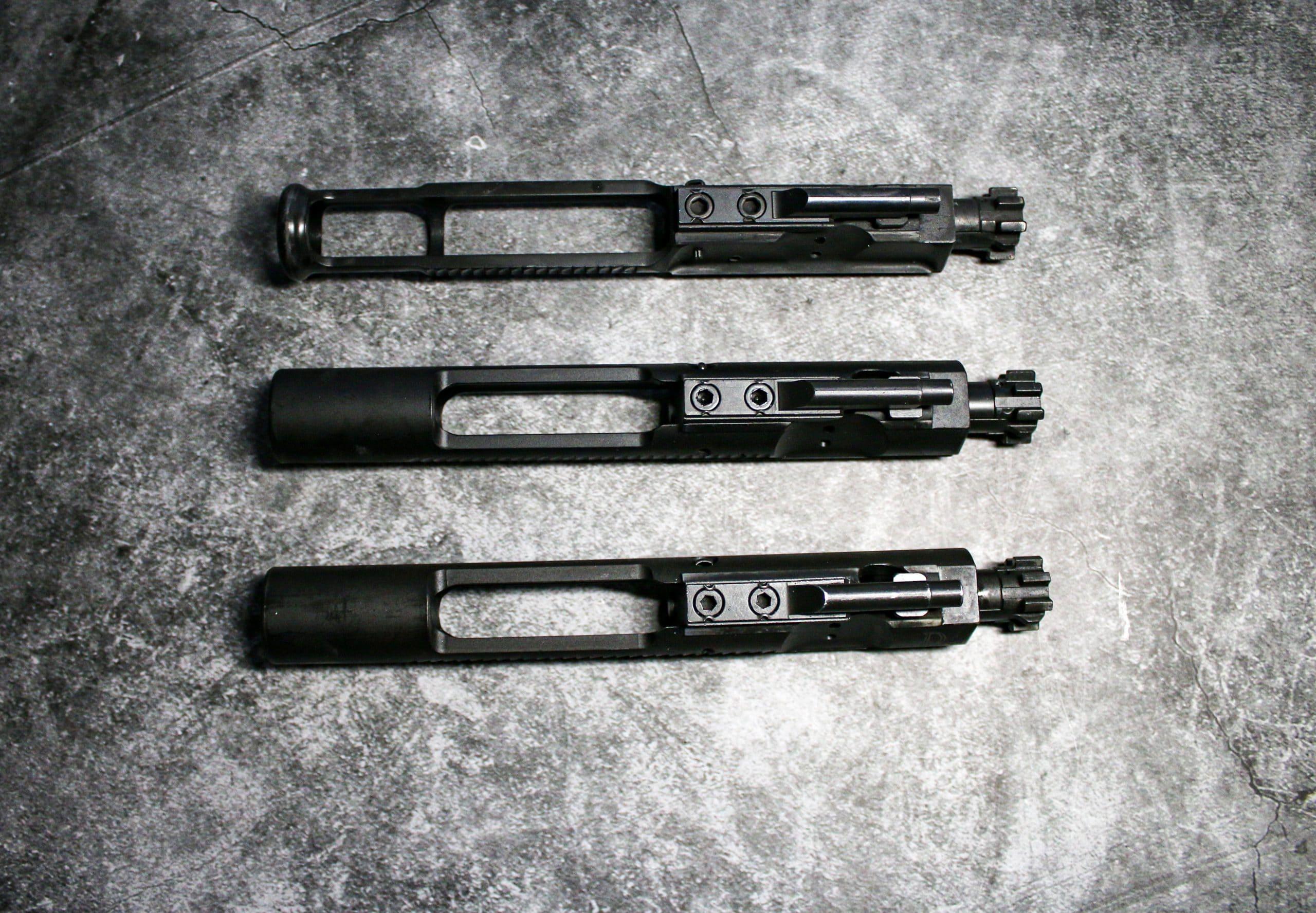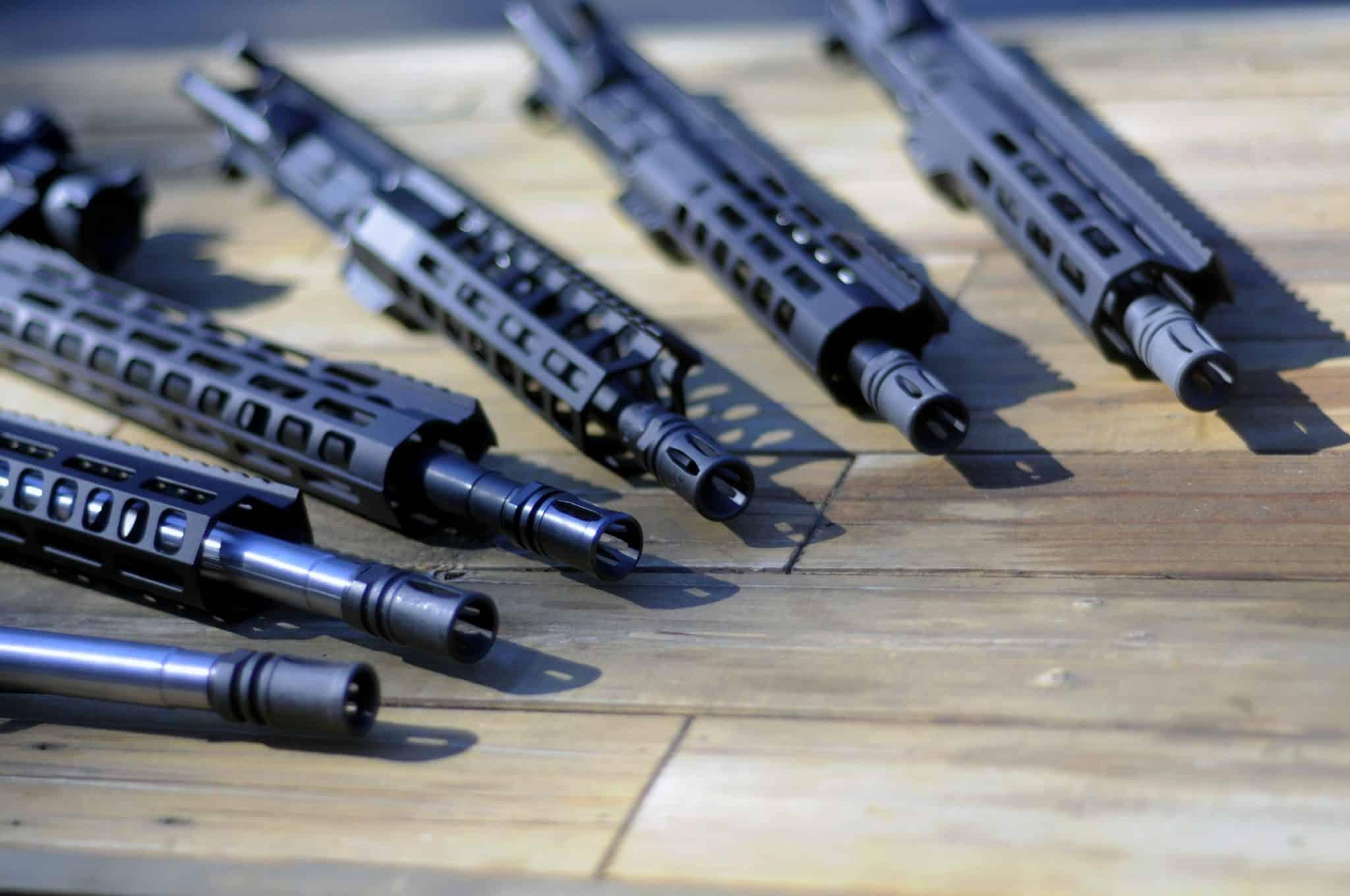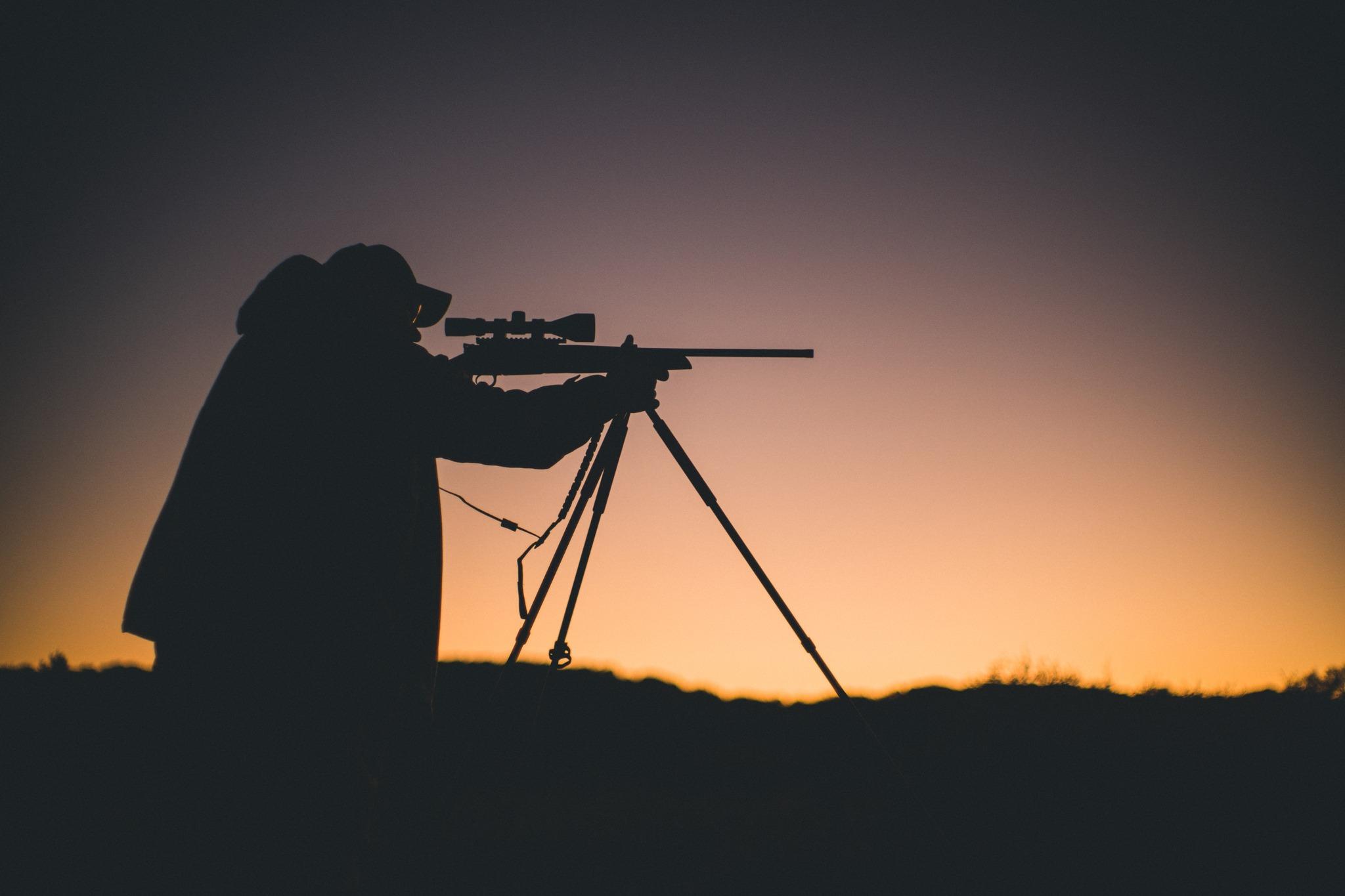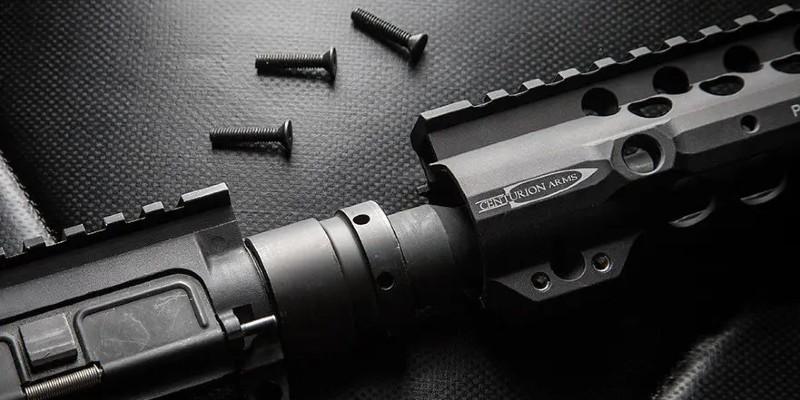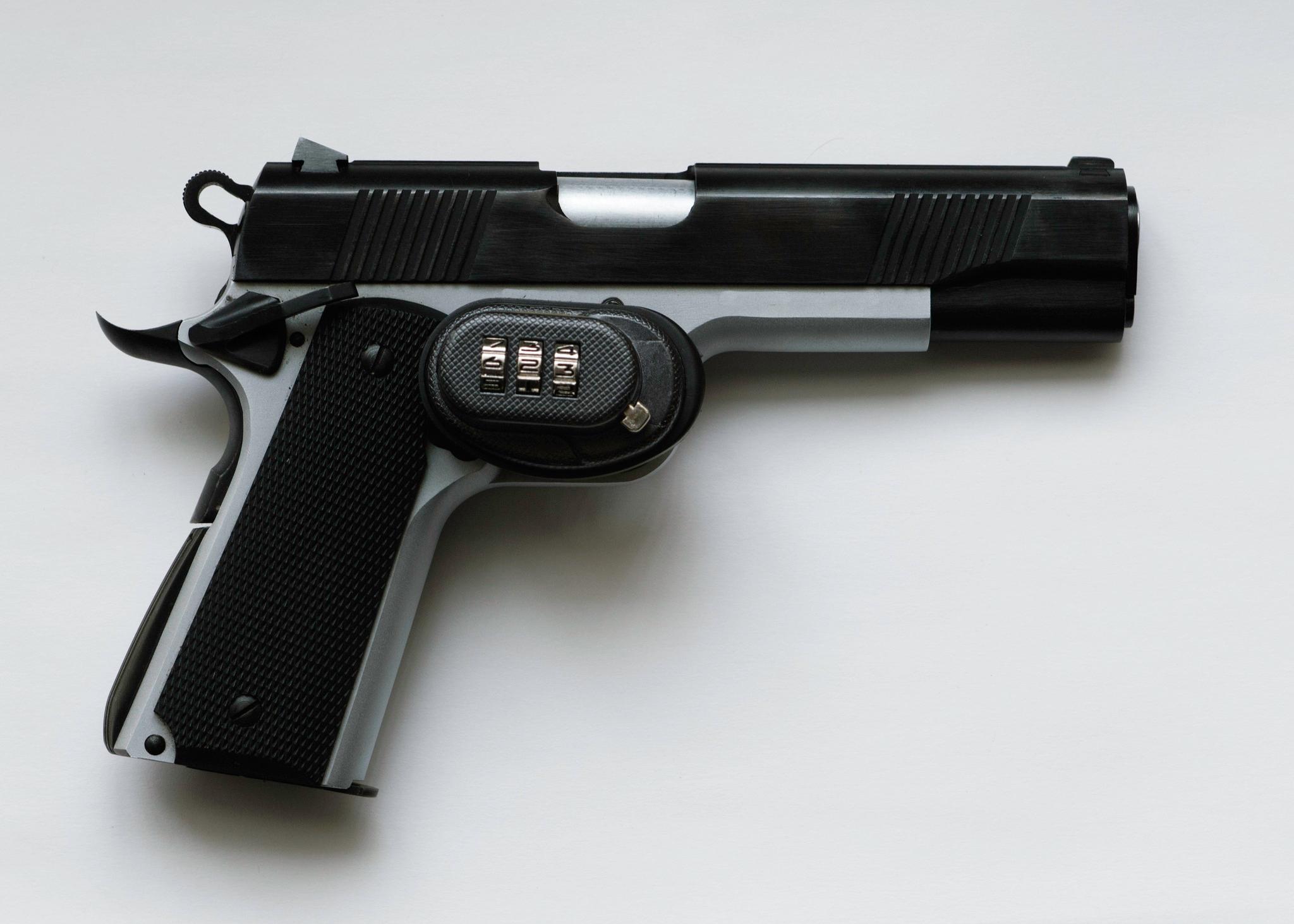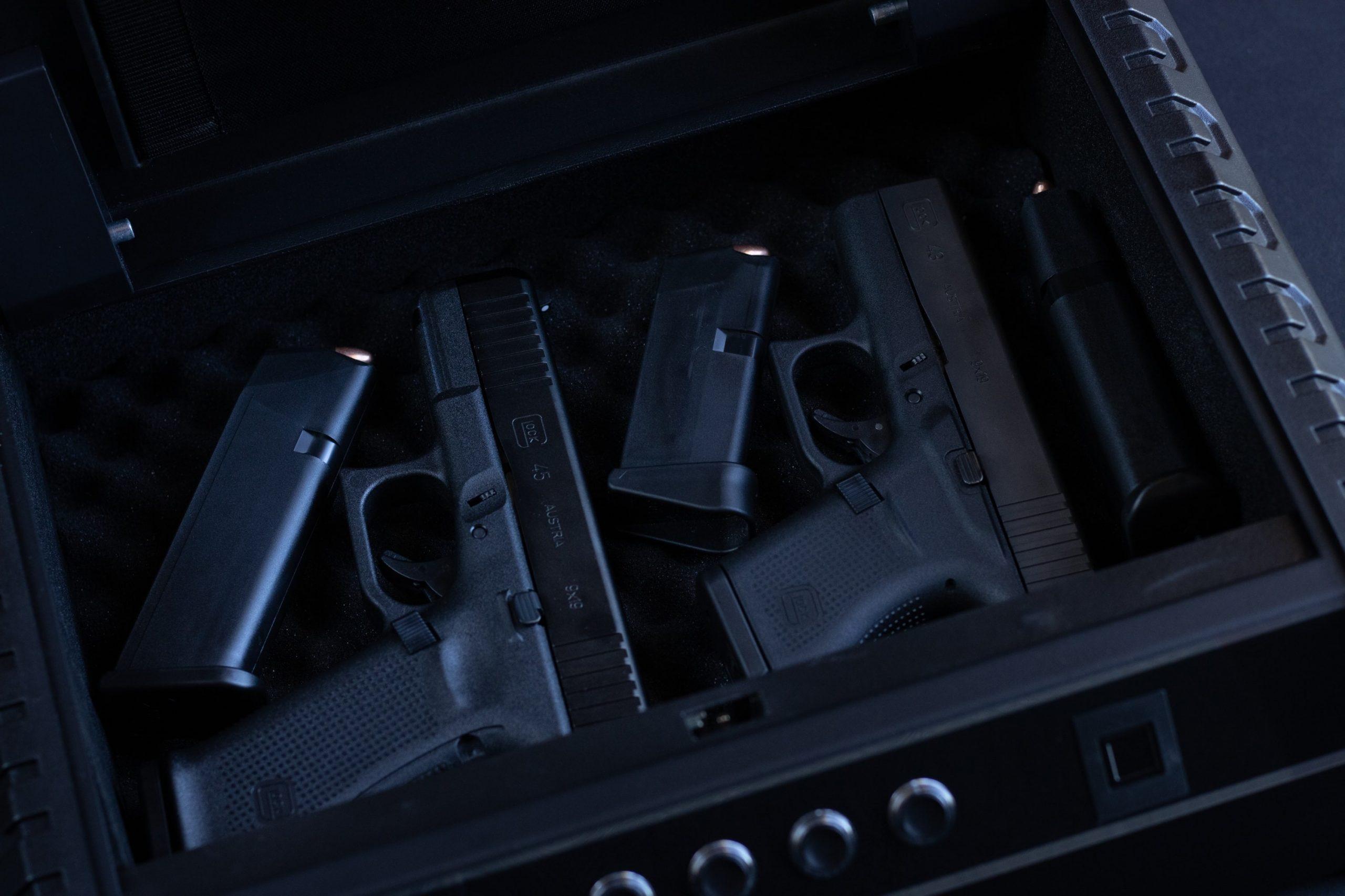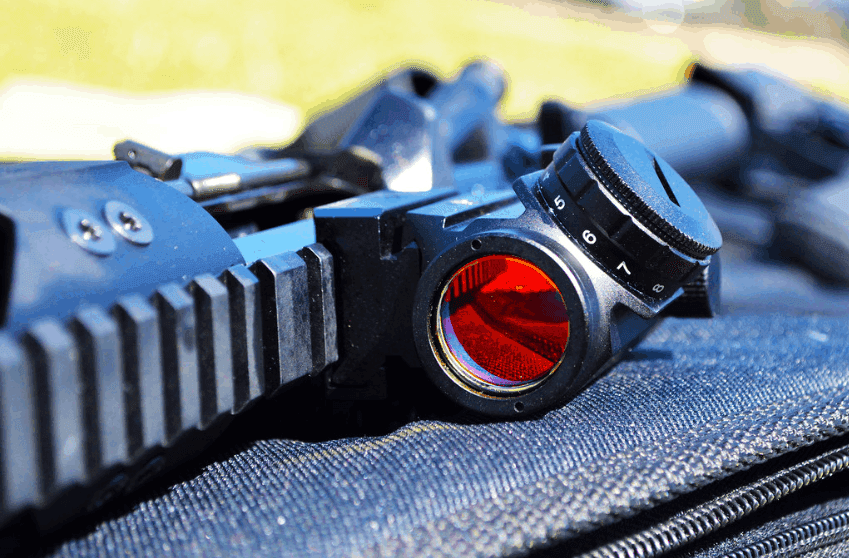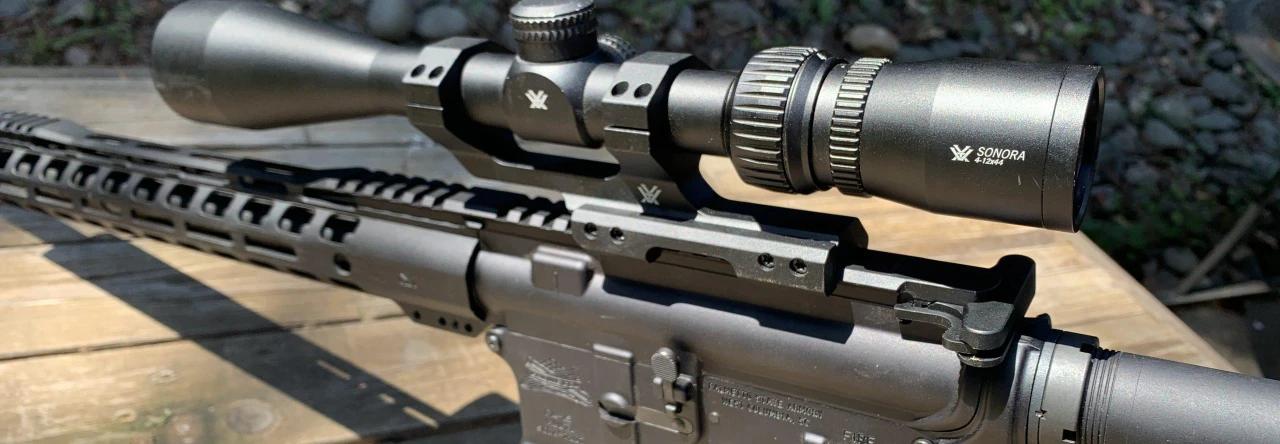Best Semi Auto Shotguns: Shoot With More Speed & Precision
Written By
Kenzie Fitzpatrick
Competitive Shooter
Edited By
Michael Crites
Licensed Concealed Carry Holder
Share:
Products are selected by our editors. We may earn a commission on purchases from a link. How we select gear.

Updated
Sep 2023
In the world of scatterguns, doubles are steeped in tradition, and pumps are very rugged and reliable, but the fact is that “semi-auto shotguns are the best choice for most If that is, you pick one up that’s built to perform.
The technology and engineering that powers semi-automatic shotguns have never been better, so prior concerns about reliability and performance are just that — a thing of the past.
Today’s semi-auto shotguns are both dependable and practical firearms — and often will give you the best experience regardless of the kind of shooting you might want to do, be it running tactical shotguns or hunting kit.
Some shooting sports don’t allow them due to tradition, but the truth is no other shotgun system provides you with the speed, reliability, and performance of a semi-auto.
Take your pick — home defense, hunting, or shooting sports — a quality repeater just gets the job done better than other options.
In This Article
Compare Side By Side
Our Top Picks
Displaying 1 - 1 of 7
Awards
Price
Overall Rating
Description
Rating Categories
Accuracy
Ergonomics
Features
Fit & Finish
Reliability
Value

$589.99 at Palmetto State
Jump to Details52
A hard-to-beat bargain from Tristar, the Viper G2 is surprisingly well-built and performs without complaint.
9/10
8/10
8/10
9/10
10/10
8/10

$1095.99 at Palmetto State
Jump to Details31
A feature-packed signature semi-auto shotgun by Jerry Miculek, available in 4+1 or 9+1 configuration with 3-inch chambers.
6/10
5/10
5/10
6/10
5/10
4/10

$1949.99 at Palmetto State
Jump to Details34
A 12- or 20-gauge shotgun with an inertia system that's high-quality, reliable and offers excellent ergonomics.
8/10
5/10
5/10
6/10
6/10
4/10
$1608.99 at Palmetto State
Jump to Details28
A fantastic upgrade to the 1301 combat shotgun, adding critical improvements and Magpul shotgun stock.
5/10
4/10
5/10
5/10
5/10
4/10
$1927.99 at Guns.com
Jump to Details33
A reliable and soft-shooting dual-piston gas-operated modern combat shotgun preferred by the USMC and John Wick.
6/10
5/10
6/10
6/10
6/10
4/10
$1326.99 at Taran Tactical
Jump to Details38
A competition-grade shotgun that can withstand any condition. Comes with a Match Saver and 12-round tube capacity.
9/10
6/10
6/10
7/10
6/10
4/10
$1600.99 at Palmetto State
Jump to Details30
A reliable and modern version of the classic Auto 5 shotgun, with improved internals and multiple customization options.
7/10
4/10
5/10
5/10
5/10
4/10
Semi-Automatic Shotgun Picks
1. Best Value: Tristar Viper G2 Pro
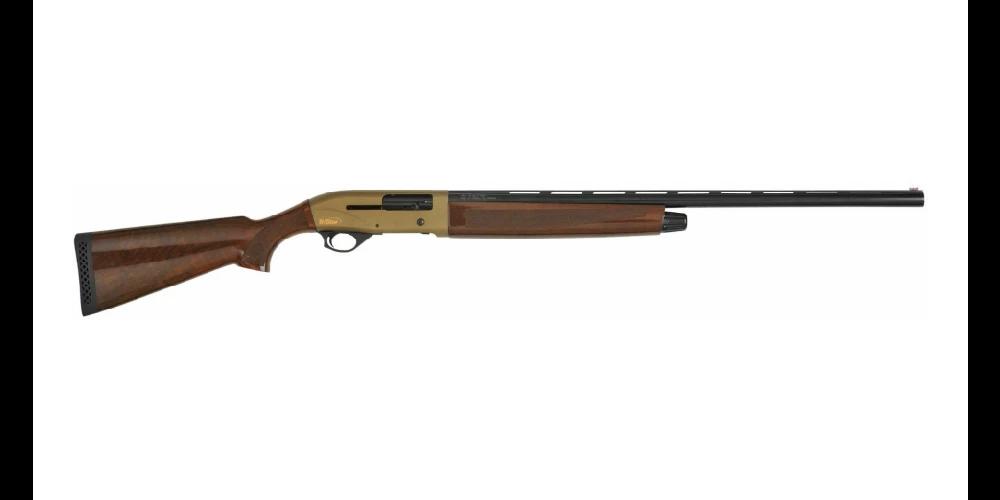
$589.99

52
EXCEPTIONAL
2024 Awards & Rankings
Performance Scores
Lots of brands promise “value without sacrificing quality” and when I got my hands on the Tristar Viper G2 PRO, I was intrigued by its potential for fulfilling that promise.
As someone who looks for quality over price alone (especially when it comes to firearms), I was a little skeptical — but admittedly curious — to see where this shotgun would stand.
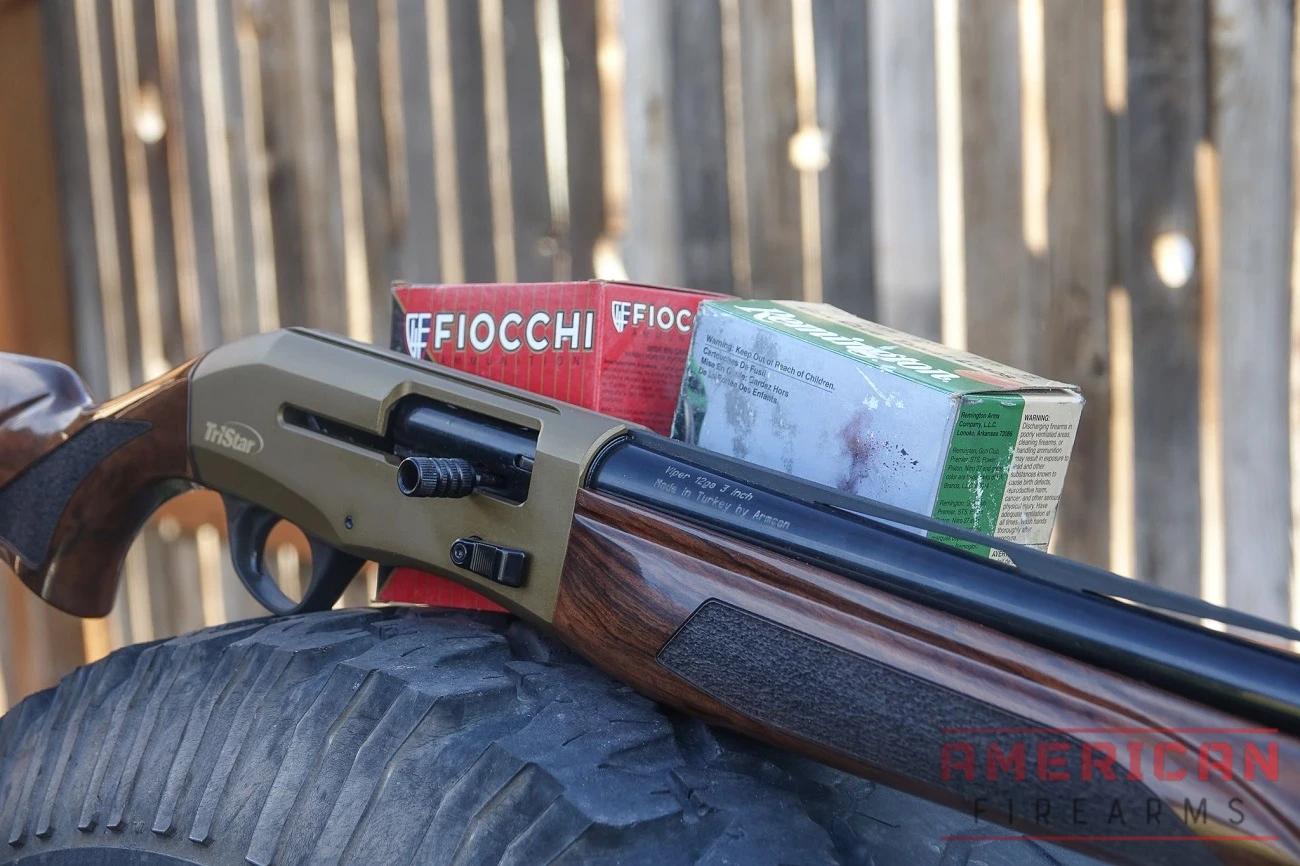
One thing I noted was Tristar’s commitment to quality — they have a five-year warranty, which instilled confidence and tempered all the bad juju associated with overly attractive price tags. Warranty aside, the Viper G2 PRO has a handsome walnut stock reminiscent of high-end shotguns, and there’s a lot of versatility in the Viper series, which is impressive. Tristar offers a Viper for practically every shooting activity.
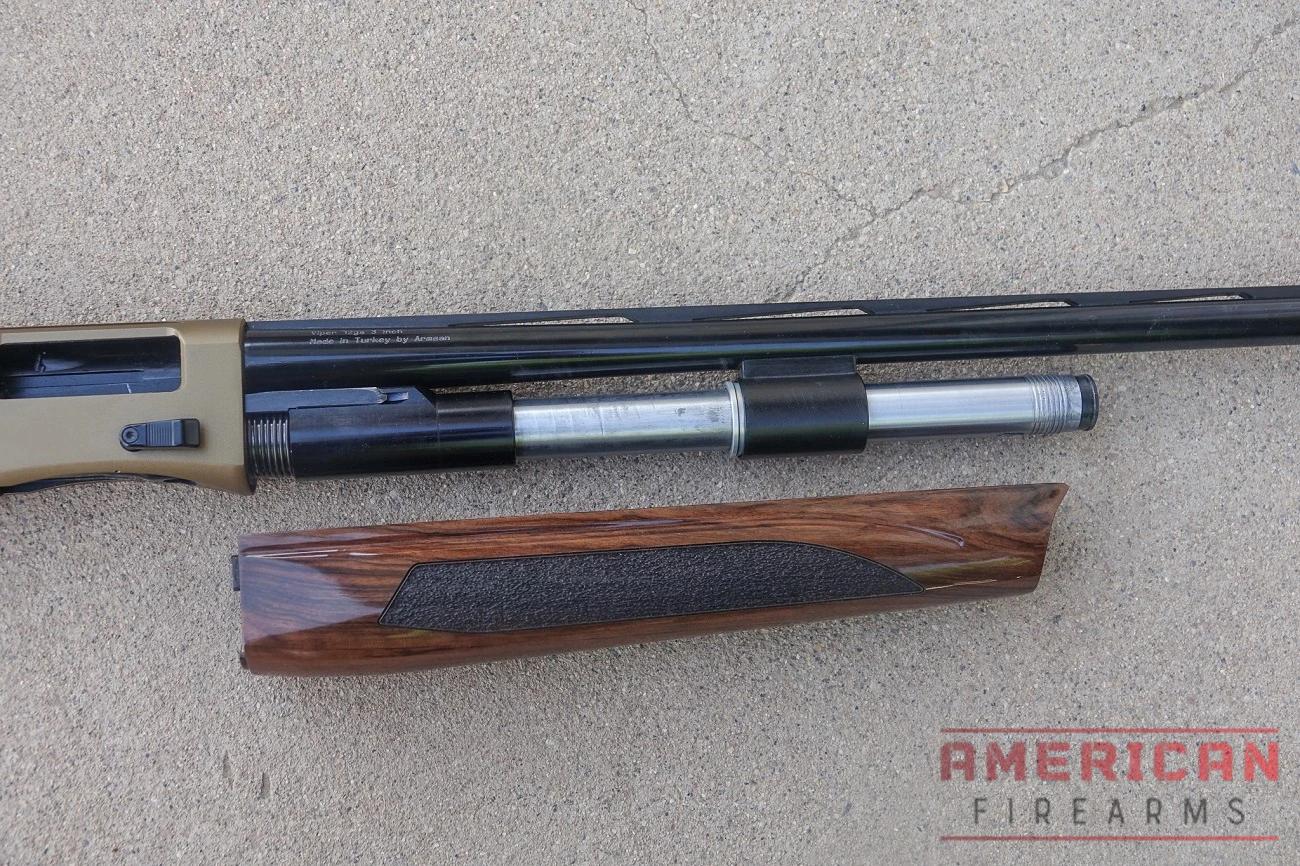
The simple and effective design gas-operated semi-auto system of the Viper feels well-designed and gave me no headaches when testing hand-thrown clays over a few days. I also tested the interchangeable chokes, which just tightened up the pattern and had me hitting more and more as I got familiar with how to lead with the Viper. A small orange fiber optic front bead helped me extend the clay session into dusk (or as long as my eyes were willing).
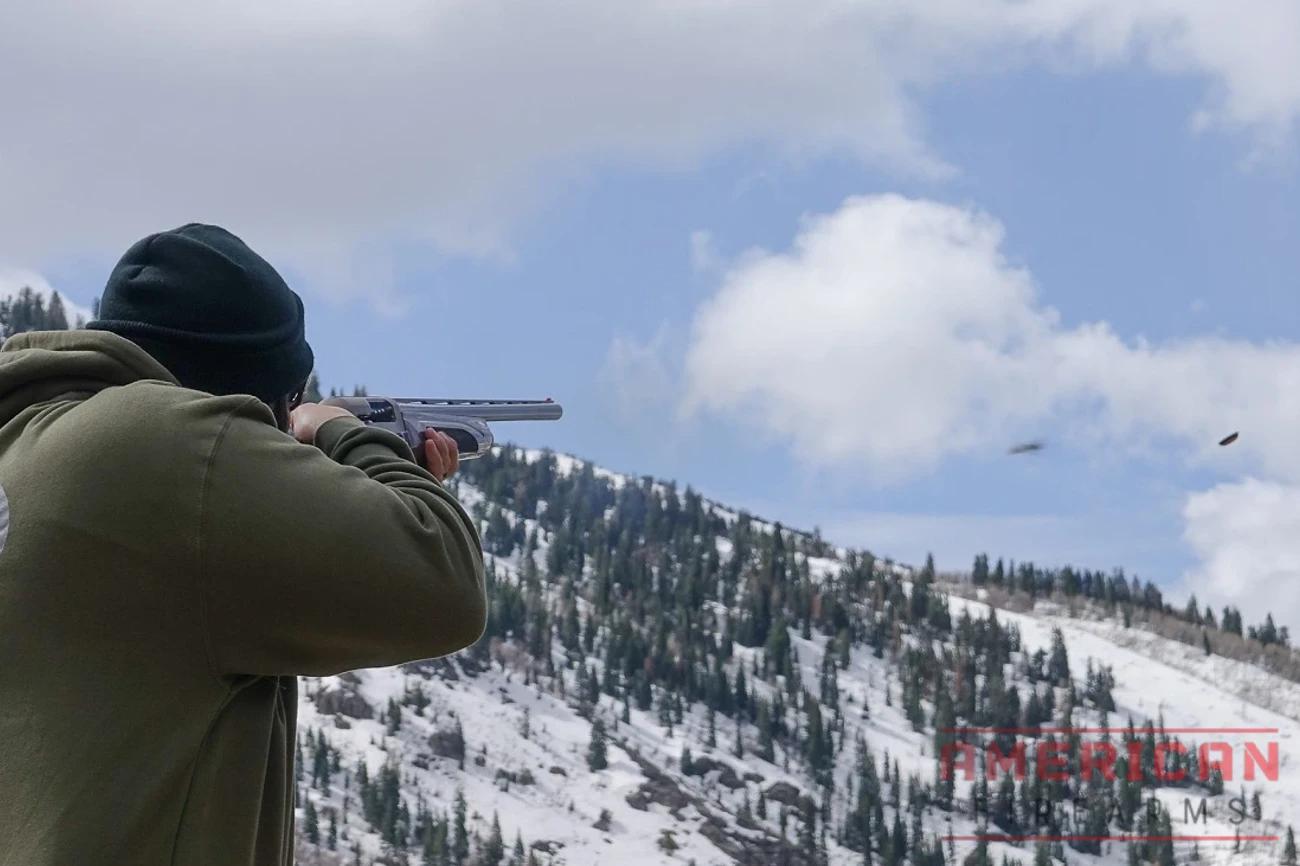
Taking the Viper out for a spin, it was more accurate and consistent than I expected to be exceptional. Patterns consistently hit where I aimed, and swapping chokes only improved its performance. The Viper turned a lot of clay targets into dust.
Ergonomics-wise, the Viper G2 PRO feel comfortable and familiar. Its controls were easy to use, and the textured grip provided a secure hold on what is an admittedly slick stock. I appreciated the adjustable buttstock angle, although an adjustable comb would have been a welcome addition for more personalization.

Despite not following the recommended break-in procedure, the Viper performed flawlessly throughout my testing. It reliably cycled standard loads and maintained cleanliness even after extended shooting sessions.
Want more on the Tristar Viper G2 Pro? Check out our in-depth review.
2. Best Hunting Shotgun: Mossberg 940 JM Pro
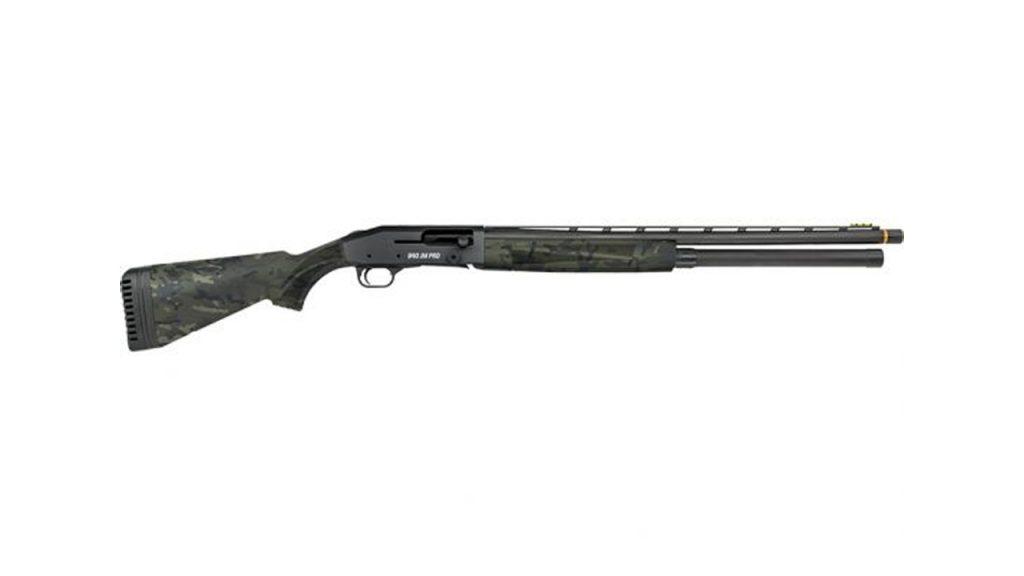
$1095.99

31
AVERAGE
Performance Scores
If there’s a better “gamer” shotgun out there…tell us. This is Jerry Miculek’s signature semi-auto shotgun from Mossberg, and it is feature-packed.
The 940 JM Pro is available in 4+1 or 9+1 configuration, with 3-inch chambers. It’s only offered in 12-gauge, but frankly, it’s so soft-shooting that you’ll barely notice with target loads. It comes with a synthetic stock and a fiber optic front bead sight, in either matte blue or black multicam.
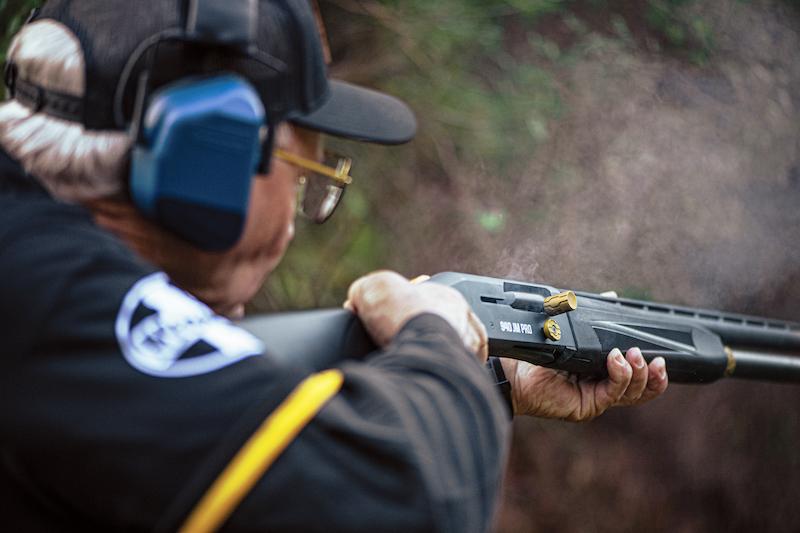
Other features include an oversized charging handle and shell ejector, flared ejection port, an adjustable length-of-pull kit (with spacers and buttpad), and a Briley set of interchangeable chokes.
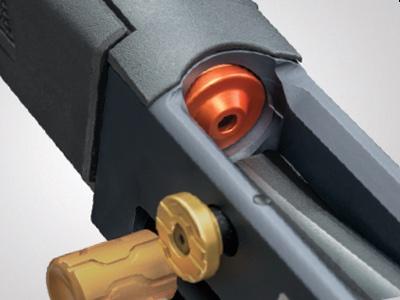
Owning one won’t make you shoot like Jerry, but you aren’t going to find an out-of-the-box semi-automatic shotgun that makes it anywhere as easy to shoot as fast as the 940 JM Pro.
3. Hunting Runner-up: Benelli Super Black Eagle II

$1949.99

34
AVERAGE
2024 Awards & Rankings
Performance Scores
The Benelli Super Black Eagle — or SBE — brought inertia systems from obscurity into the mainstream. In 1980, nobody used inertia action systems. Today, the SBE is one of the standards by which semi-autos are judged.
The third iteration – the Benelli Super Black Eagle III – has all the refinements that make a Benelli a Benelli.
A smooth, reliable inertia system inside a trim, lightweight receiver; a near-perfect field shotgun for any purpose are available in multiple finishes and configurations, 12- or 20-gauge, and in both 3- and 3-½ chambers.
Benelli cryogenically treats the barrels, making them exceptionally long-lasting. SBEs are known for long life cycles and excellent ergonomics, and a crisp trigger second to none. A fiber optic front sight is included, along with three flush-fit and two extended chokes.
The privilege comes a bit dear, to be sure, but chances are you’ll only ever have to buy one.
4. Home Defense Pick: Beretta 1301
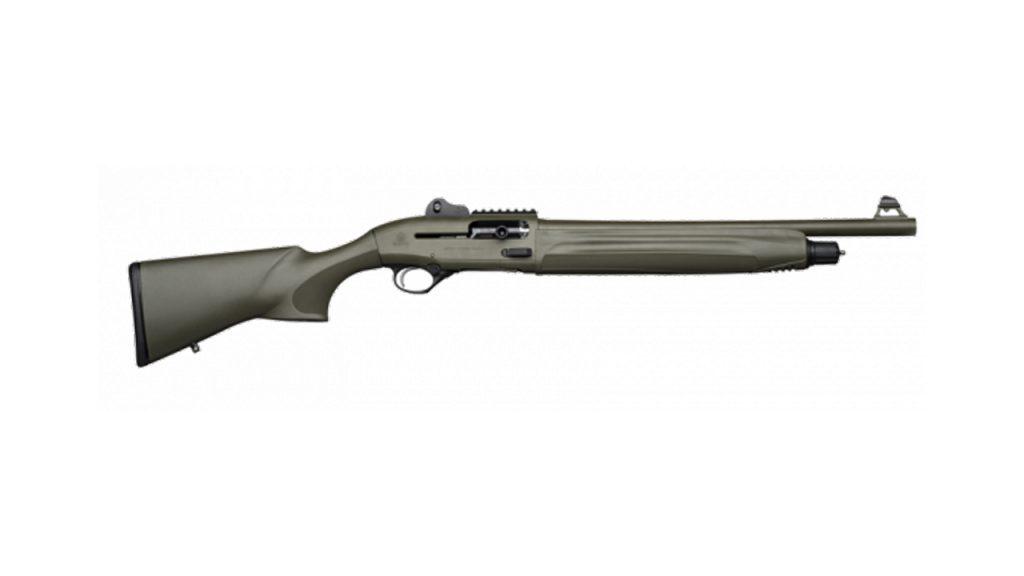
$1608.99

28
AVERAGE
2024 Awards & Rankings
Performance Scores
Beretta has a long-standing relationship with Ernest Langdon, a national champion USPSA and IDPA shooter and gunsmith.
While known for his utter wizardry with the 92 and PX4 series of pistols, he’s now offering an upgrade package for the Beretta 1301, Beretta’s combat shotgun.
The 1301 is a gas-operated semi-auto 12-gauge with a 3-inch chamber. It’s rugged & reliable, but Langdon adds some critical improvements over the base model.
A Magpul shotgun stock replaces the standard synthetic stock. Magpul’s Zhukov forend (typically for Yugo-pattern AKs) is added and incorporates M-Lok slots for attaching a light, sling or other accessories, Nordic Components magazine extension.
An enlarged safety button, shell release, and charging handle are also added for more straightforward operation. You can also add an Aridus mount for a red dot and an Aridus side saddle shell holder.
The Langdon Elite 92 series of pistols is thought of as the perfection of the 92 series of guns. The LTT 1301 is arguably the same in the world of tactical shotguns. A better home defense shotgun may not be available at any price.
5. Best Tactical Semi-Auto: Benelli M4

$1927.99

33
AVERAGE
2024 Awards & Rankings
Performance Scores
The Benelli M4 is the modern combat shotgun. If you want a gun for home defense or 3 Gun (or both) and demand no less than the best, here it is.
The M4 is the scattergun of choice for John Wick, the United States Marine Corps, and many other noteworthy combat operators.
The M4 uses a dual-piston gas-operated system rather than the SBE’s inertia system, which makes it a little softer shooting when you up the load to buckshot or slug. Available in 12-gauge, with a 3-inch chamber, the standard barrel length is 18 inches, with a 5+1 capacity.
Like the Benelli M2 and M3 before it, the receiver’s top offers up a Picatinny rail if you want to attach an optic or red dot. Irons are ghost ring sights at the rear and a black front blade. Sling mounting rings are located on the stock and attached to the magazine tube.
The M4 is a pistol grip shotgun that has proven its capabilities in combat time and time again, and while they come dearly, “better” doesn’t exist off the shelf when it comes to the semi-auto tactical shotguns segment.
6. Competition Pick: TTI Ultimate 3 Gun Benelli M2
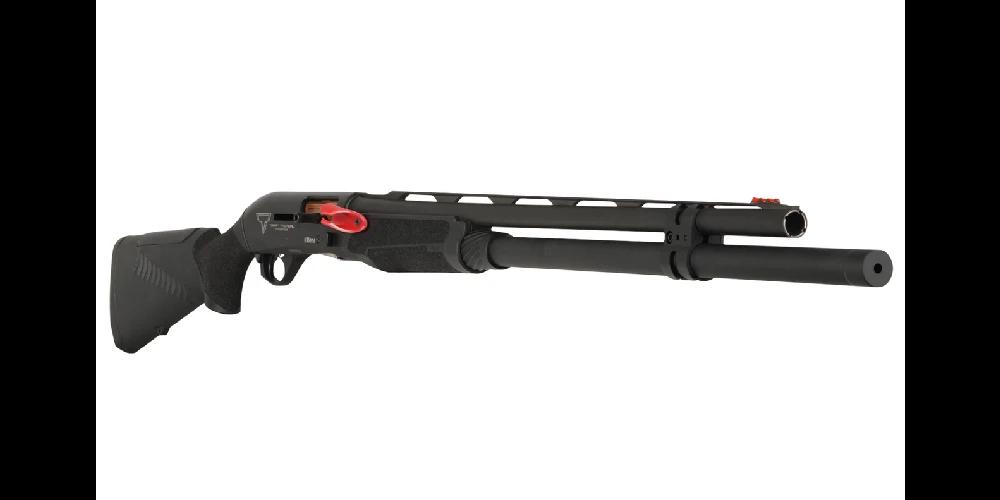
$1326.99

38
AVERAGE
2024 Awards & Rankings
Performance Scores
I’ve been through my fair share of Benelli M2 shotguns. In fact, it wasn’t until I got a Taran Tactical Benelli that I found one that worked. Most people trying to find a new shotgun are looking for one to shoot maybe two or three times a year.
I am always looking for a gun that won’t break, no matter the conditions I shoot it in, how little I clean it, or what ammo I feed it.
Enter the TTI Ultimate 3 Gun Benelli M2.
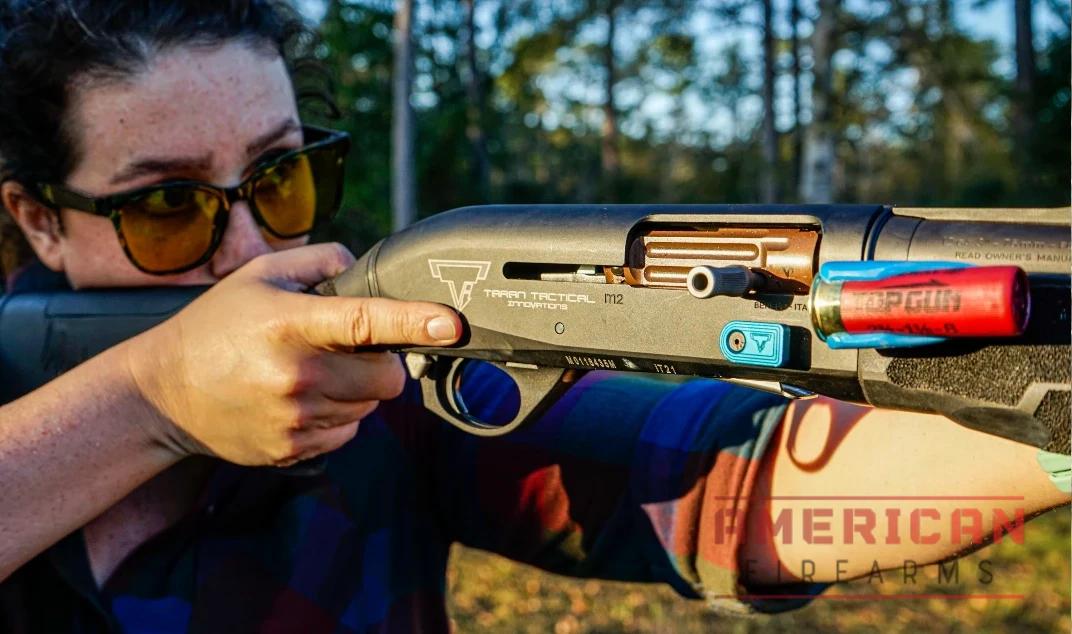
This gorgeous shotgun comes in your choice of 21-inch, 24-inch, or 26-inch barrel and can be designed in a left-handed or right-handed configuration.
While I prefer a traditional stock, it’s also available in a pistol grip stock. Because this shotgun is built for 3 Gun competitions, you can extend the tube to increase ammunition capacity.

I outfitted mine with a 12-round tube capacity, a Match Saver to hold one spare round, and went with a green front fiber optic. The gun’s action is as smooth as butter with a polished shell catch and carrier latch, and the famous TTI custom lifter with a machined and polished loading port to make reloading easier.
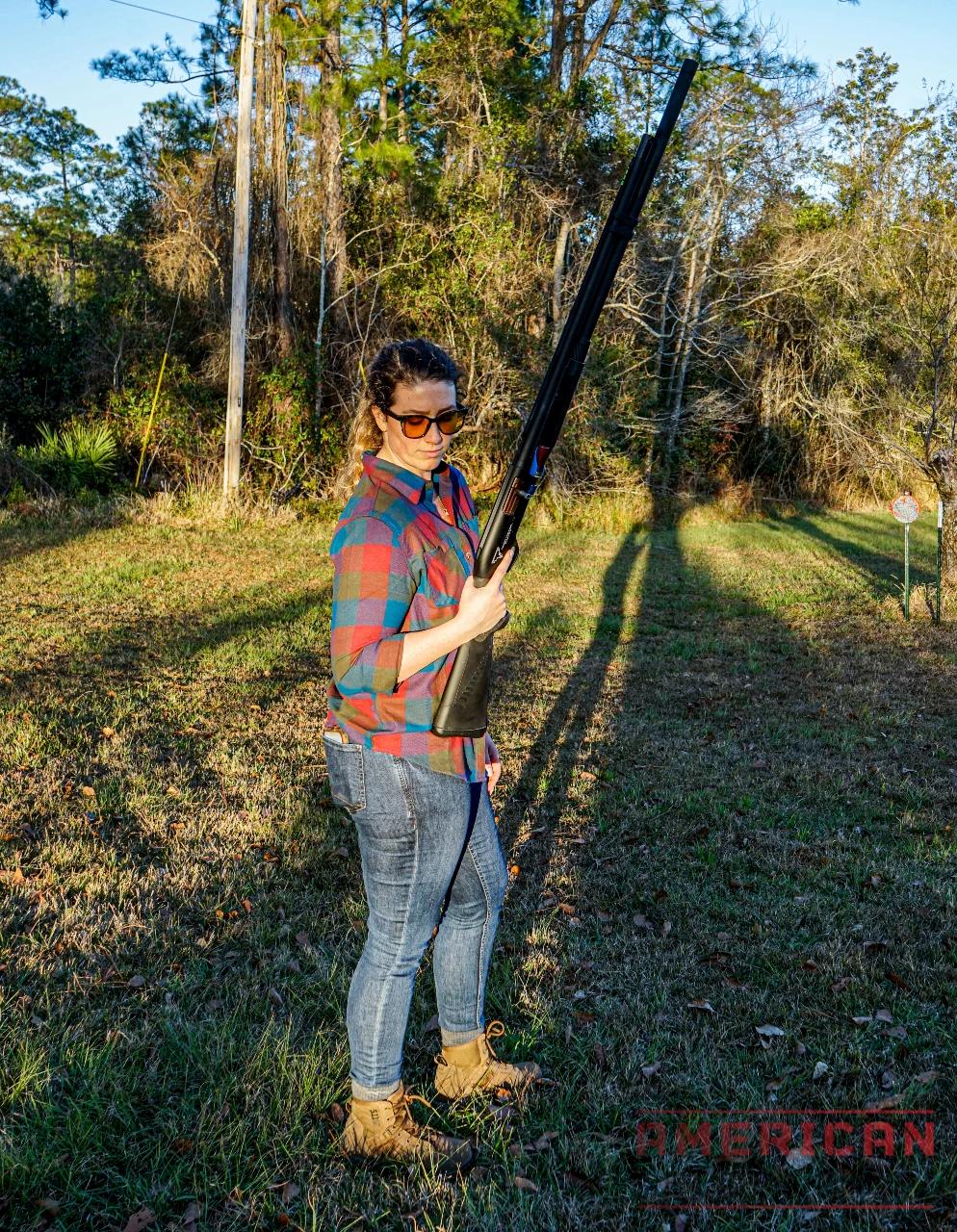
Keanu Reeves putting a Taran Tactical shotgun to good use.
The shotgun has oversized controls, including a large safety and bolt release and custom stippling for better grip. This is the best 3 Gun, race-ready, Benelli M2 that performs when needed.
7. Also Great: Browning A5
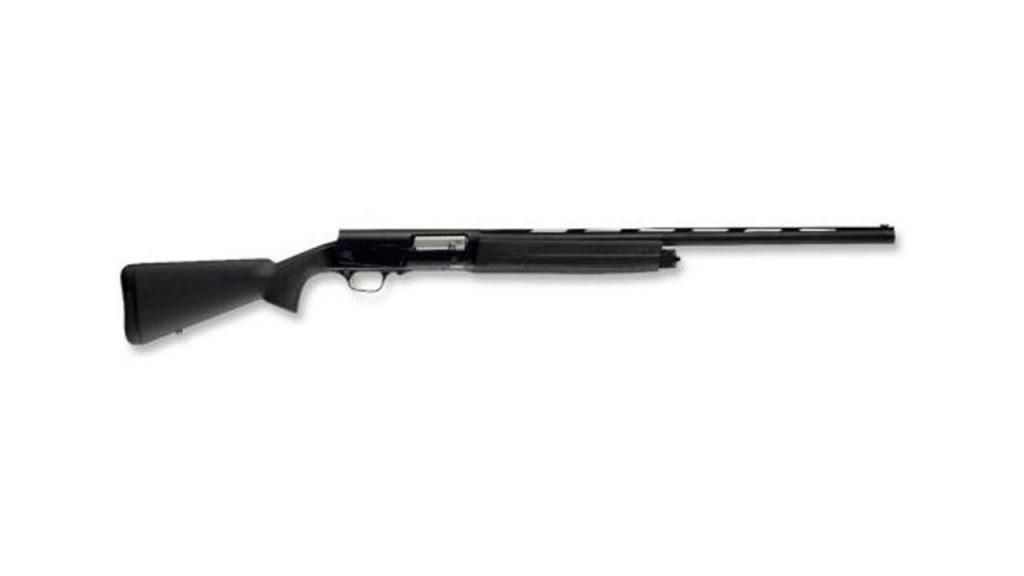
$1600.99

30
AVERAGE
2024 Awards & Rankings
Performance Scores
What’s old is new again, and John Browning’s resurrected Auto 5 — now dubbed the Browning A5 — improves the breed by adding their Kinematic Drive (they call it “short recoil”, but it’s an inertia system) to make it a bit less load-sensitive.
The A5 has the Auto 5’s trademark humpback receiver, which gives it a classic shape and gorgeous lines. The revised internals make the gun simpler, smoother and more reliable than the original ever was. It also comes with a 100,000-round, 5-year warranty; that’s how confident Browning is in these guns.
Multiple finishes and furniture choices are available, including blued steel and walnut or camo and synthetic—all models ship with three Invector interchangeable choke tubes and a fiber optic front sight.
You have your choice across most models of 26-, 28-, and 30-inch barrels and 3- or 3-½” chambers. However, 12-gauge is the only choice outside of a single model. Part of the model lineup is a return of the Sweet 16, a 16-gauge echoing the Auto 5 Sweet Sixteen of so many years ago.
When he developed the original Auto 5, John Moses Browning made semi-automatic shotguns reliable, popular, and attainable. The A5 is, by all accounts, a very worthy successor.
Benefits of Using a Semi-Auto Shotgun
Semi-auto shotguns are one of the most versatile firearms available anywhere. A classic side-by-side is great, but a semi-auto shotgun gives you more speed, more capacity, and is often easier to control. However, a semi-auto is used for much more than smashing clays — let’s look at a number of reasons to consider buying a semi-auto:
Capacity
If you want more than two rounds on board (unlike doubles) and don’t want to worry about cycling the action between shots (like one does with a pump action shotgun), you want a semi-auto shotgun.
Faster Reloads & Follow-Up Shots
They’re better in a defensive scenario because less reloading and faster follow-up shots make the user more combat-effective, just like how an M1 Garand in the hands of a fresh American recruit was more effective than a K98 wielded by any German soldier — the semi-auto action of the Garand proved to be a decisive factor in any and every engagement.
In a hunting context, almost all state regulations limit you to three rounds in the tube, but the faster follow-up shots of a semi-auto can make the difference between filling a tag and being left with little more than a campfire story.
Anyone who’s hunted with any firearm, let alone shotguns, knows that sometimes a second shot is required. Few hunting experiences are as aggravating as watching a trophy tom get up after being knocked down only to scamper away when you realize you forgot to rack the pump.
Do we all want the first shot to be perfectly placed? Of course — but follow-ups happen. Semi-autos eliminate any delay in the follow-up shot and don’t require you to compensate the way an offset SxS does.
In shooting sports such as 3 Gun or clays, the same holds – faster follow-up, more shells in the gun.
Softer Shooting
Semi-auto actions use recoil or the inertia of the fired shell to run the action, which means the gun itself eats up some of the recoil forces during normal operation. This often softens the load on the shooter’s shoulder, making the guns run softer than shotguns that use traditional actions.
How Do Semi-Autos Work?
Essentially, all semi-automatic shotguns break down into one of three classes: gas-operated, recoil-operated, and inertia-operated.
Here’s a brief rundown of each.
Recoil Operation
Recoil operation uses recoil energy from the projectile leaving the barrel to propel the gun’s bolt backward. This can be further divided into short recoil and long recoil; the difference is that the barrel itself moves in long recoil operation.
Recoil-operated shotguns are exemplified by the original Browning Auto 5, which is (some would say sadly) no longer in production.
Gas-Operated
Gas-operated shotguns (and indeed, gas-operated semi-automatic firearms as a class) divert exhaust gases created by the burning powder from the fired round from the barrel to (usually) a piston system, which propels the bolt backward.
The bolt on these “gas guns” is shoved rearward by the gas pressure, which compresses a recoil spring. The spring pushes the bolt forward at full compression, chambering the next round, pushing it into battery, and closing the action.
In shotguns, the recoil spring of a gas-operated semi-auto sits around the magazine tube. If you take off the forend, you’ll see a collar at the front of the tube, connected to the bolt (in the receiver) by action bars.
Of course, this action system’s granddaddy is the Remington 1100, which some would contend is pretty much when semi-auto shotguns peaked.
Inertia-Operated
Inertia-operated shotguns are a little more novel.
The bolt, which is connected to a plunger that extends into the stock, has a two-piece assembly with a spring inside it that’s compressed when the bolt is in battery. The spring in the bolt assembly delays bolt travel just long enough for all gases to be expelled out the barrel.
When the bolt does begin to move, it’s doing so through sheer inertia rather than direct propulsion backward. When the bolt travels, the plunger compresses a recoil spring until it’s sent forward, and the bolt returns to battery.
Today, gas-operated is the most common semi-auto action, with inertia-operated bringing up the rear.
Pros and Cons of Semi-Autos
The benefit of semi-auto shotguns is faster follow-up shots, increased capacity compared to doubles, and a bit of extra weight to dampen recoil.
Granted, anyone who’s fired a 3- or 3-½ inch shell full of high-speed #2 has quickly learned they don’t dampen it very much, but the potential is there — regardless of whether your shoulder agrees with your decision.
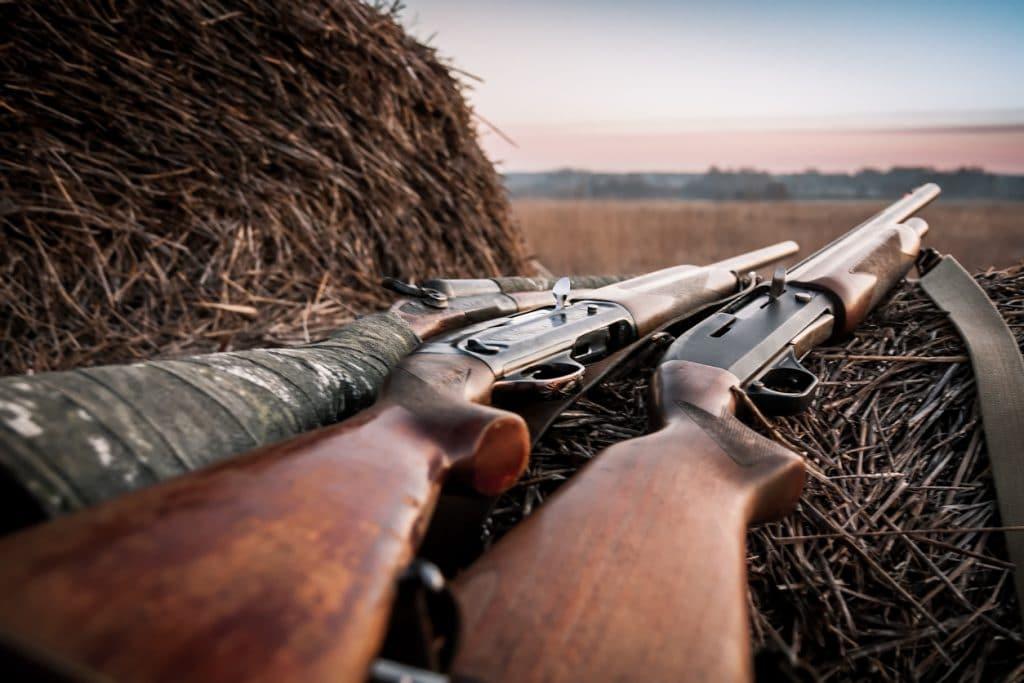
That said, any semi-automatic system – shotgun or otherwise – relies on the harmony of the recoil management system and the forces applied to it to balance the action’s components and cycle of the gun smoothly and reliably. This proved tricky when semi-autos first came on the scene.
If the recoil spring is too light, heavy loads cause malfunctions or the internals get battered. Too heavy and light loads will cause failures to cycle. Therefore, a semi-auto shotgun is going to be more ammunition sensitive than pump-action or SxS alternatives. How sensitive depends on the gun’s design.
Anything can be tuned, after all.
That’s why most inertia shotguns have a recoil spacer for shooting light loads, and gas-operated shotguns typically come with light and heavy piston heads for balance.
Gas-operated shotguns will require more frequent cleaning, given the exhaust gases (and associated carbon fouling) enter the chamber to cycle the action. They have more moving parts, and more frequent cleaning is also required to ensure proper lubrication.
Inertia guns are more sensitive to rough handling as the bolt has to travel straight back to unlock and begin cycling, much like how a semi-auto pistol has to be held firmly to prevent malfunctions due to limp wristing.
Due to having fewer moving parts and needing less frequent maintenance and less lubrication, inertia shotguns tend – though they don’t always – to be a bit more reliable, especially if hunting in frigid weather.
However, fewer moving parts mean less mass in the receiver and more kick, all being equal.
Deeply experienced shotgun experts, such as Field and Stream’s Phil Bourjaily, contend that while gas guns shoot a little smoother and a little softer, the differences are minor until you’re shooting on the margins — such as a lightweight inertia shotgun loaded with weighty loads.
Buyers Guide
Just as with any kind of firearm, to choose the best semi-auto shotgun for your needs and desires, you first need to determine how you’ll use it.
There are semi-auto scatterguns for every purpose and to suit every possible aesthetic and budget. Some are configurable for various uses, like swapping your longer hunting barrel for a tactical home defense option or adding a magazine extension when you need the extra firepower and removing it afterwards. Switching between wood stocks, synthetic stocks, and adjustable-length stocks is an option when you need it.
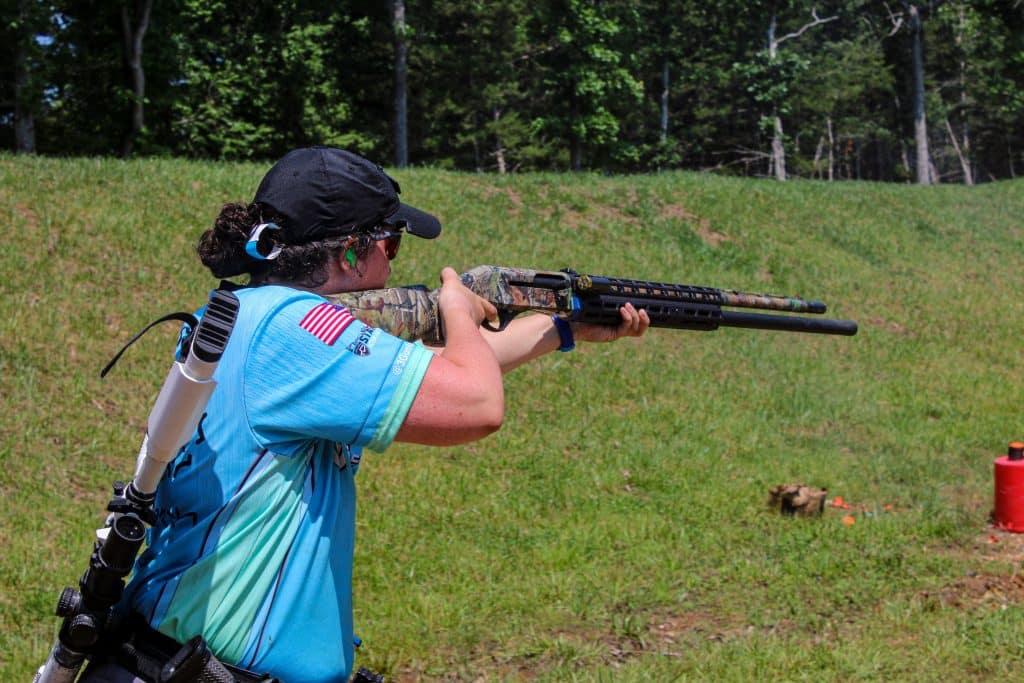
If Phil Bourjaily’s take holds any water with you (and it should), a gas gun is excellent for high-volume shooting but turn to an inertia gun when you need your weapon to run no matter what Mother Nature has in store.
That said, plenty of people have put inertia guns through heavy firing schedules without any problems, and plenty of people have taken gas guns into the field in below-zero weather with no issues at all.
It’s always best to try a few out and see what works best for you — where you live and based on your intentions — and go from there. Everything else is essentially speculation.
FAQs
You might wonder a few things about semi-auto shotguns compared to pump-action shotguns and doubles. Let’s go over a few common ones.
How reliable are semi-auto shotguns?
Reliability in shotguns is relative, as it is with any firearm, but semi-autos specifically can be a little more sensitive to ammunition. Gas-operated shotguns require maintenance for best results, or they can become prone to feeding and cycling issues and increased cold sensitivity.
Well-made and well-maintained semi-autos are incredibly reliable. Gas-operated semi-autos can run very well in the cold if you use a dry lubricant or use a gun grease with a lower flow point (lowest temperature for optimal lubricity) for better operation.
Are semi-auto shotguns worth it?
If you’re only firing a few shots here and there with no real-time stress – meaning you’re not doing it on the clock in competition shooting or needing to put a second shot on game animals – then arguably it’s not worth it.
However, when fast follow-up shots are needed, or you’re trying to win a 3 Gun match, few investments are more worthwhile.
Is it legal to own semi-automatic shotguns?
In every jurisdiction in America, owning a basic semi-auto shotgun – including many of those listed here – is legal. However, a model with an adjustable or folding stock or a pistol grip can run afoul in states with assault weapon laws, as are barrels less than 16 inches in length.
So check your state regs.
Magazine-fed semi-auto shotguns, such as AR-12s, Saigas and other AK-pattern shotguns are much more likely to be prohibited in such states. The typical semi-auto, as a common type of sporting gun, is generally safe everywhere.
Parting shots
The semi-auto shotguns listed here cover pretty much every base imaginable for a semi-auto shotgun and every purpose you might have for one, from hunting to sporting clays to defense and all points in between.
The semi-automatic shotgun is arguably the pinnacle of firearm design. It is more effective in the field. Modern semi-auto shotguns are faster and just as reliable as many pump-action shotguns.
True, the price tag can be daunting, but you don’t have to spend much more. And if you use it, you’ll get every penny out of your investment.
Sources
- Wikipedia, Recoil operation
- Wikipedia, Gas-operated reloading
- Wikipedia, Semi-automatic firearm
- Field and Stream, Gas Vs. Inertia Shotguns—Which is Better?
Updated
June 7, 2023 — After taking the Tristar Viper G2 Pro up into the Rocky Mountains for some fun smashing clays, it has replaced the Stoeger M3000 as our value pick. All other recommendations remain unchanged.
Sign up for our newsletter
Get discounts from top brands and our latest reviews!


